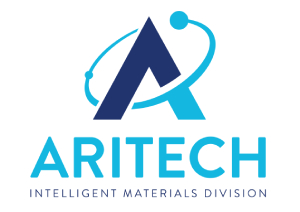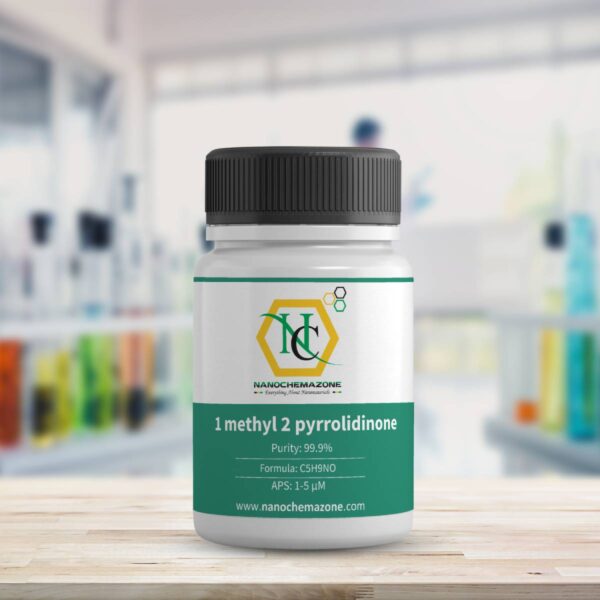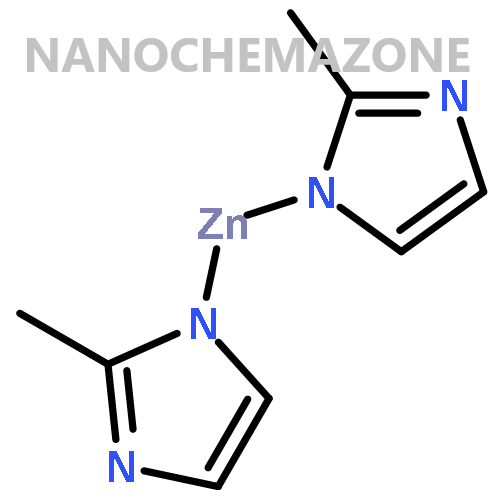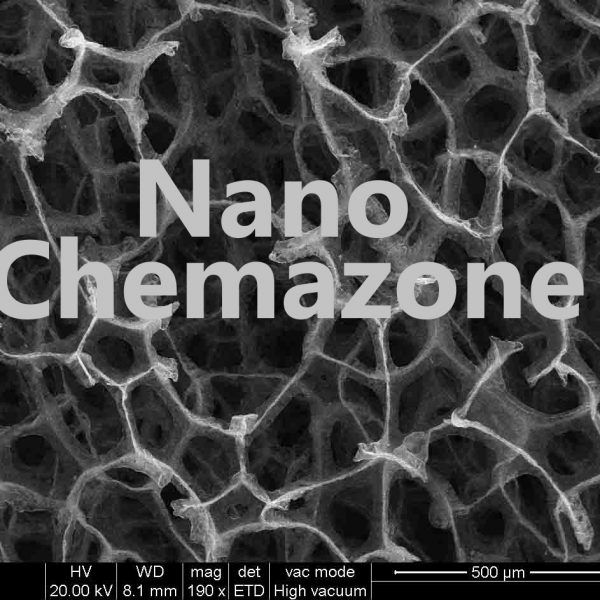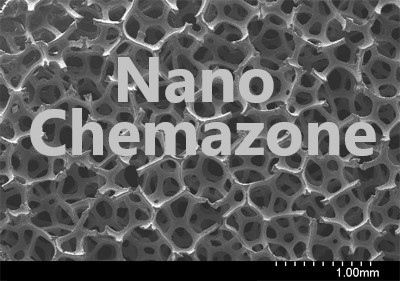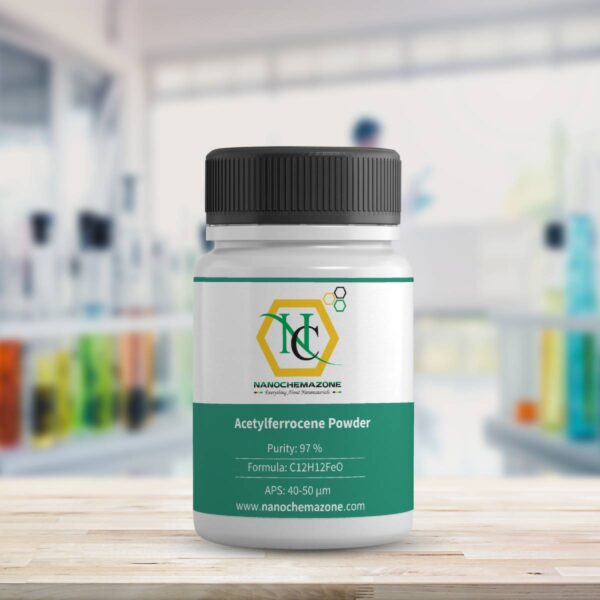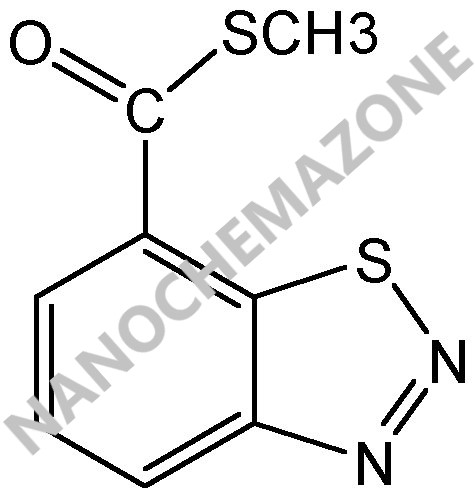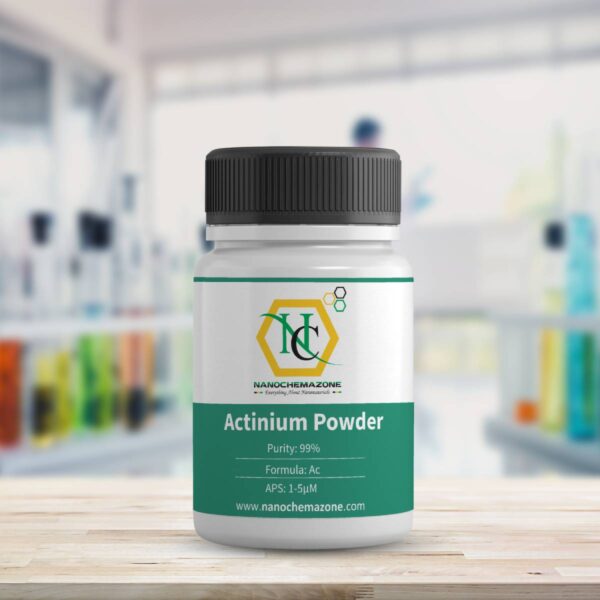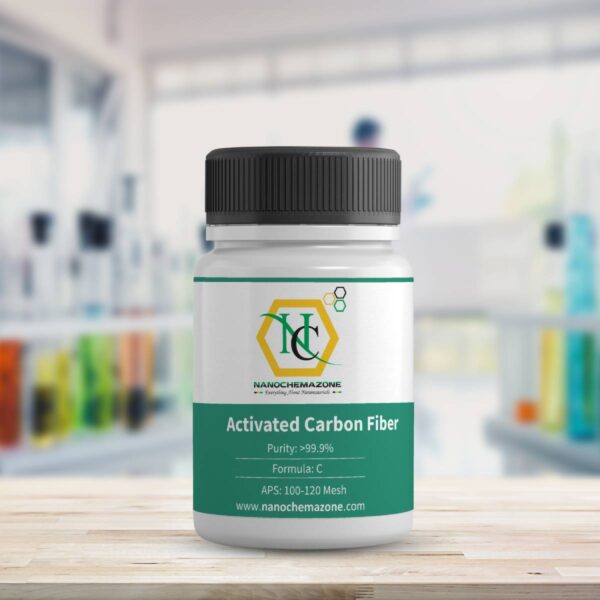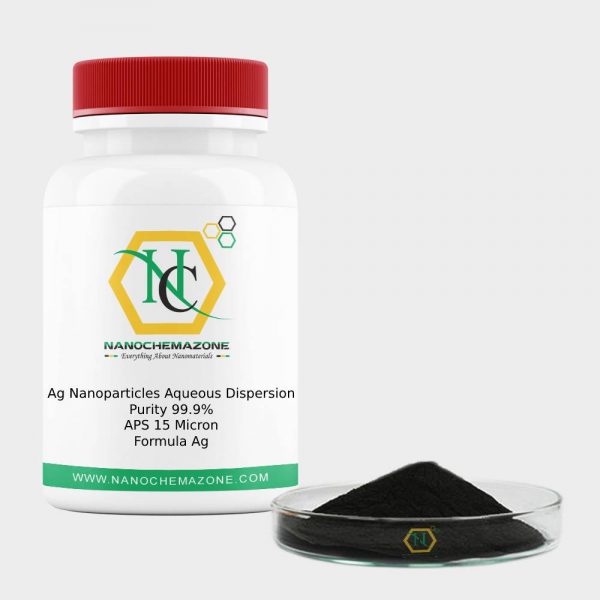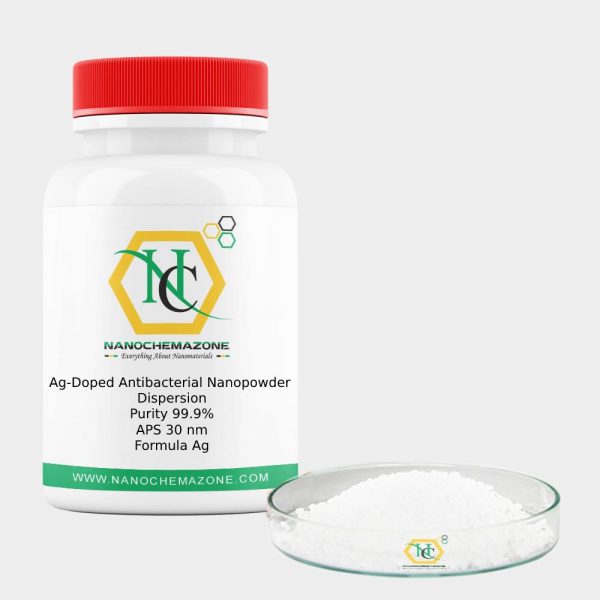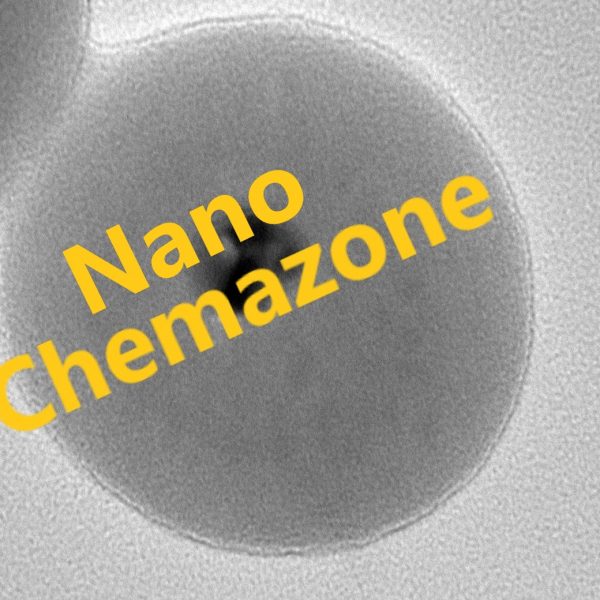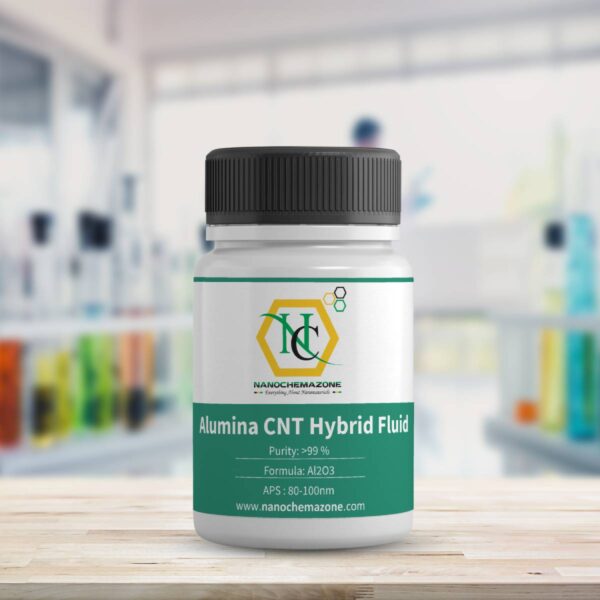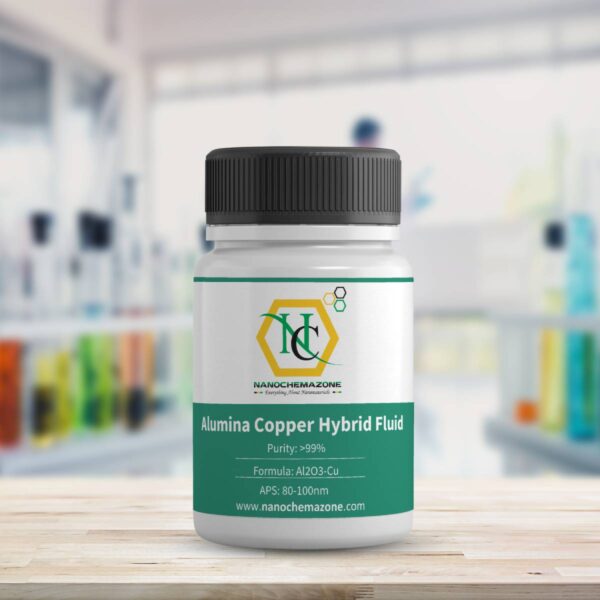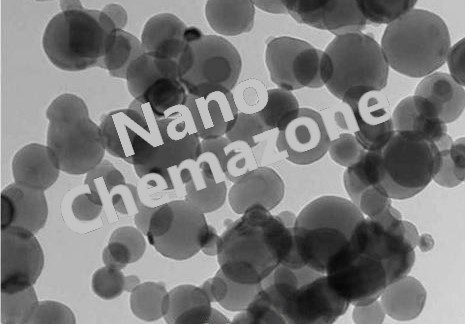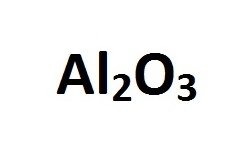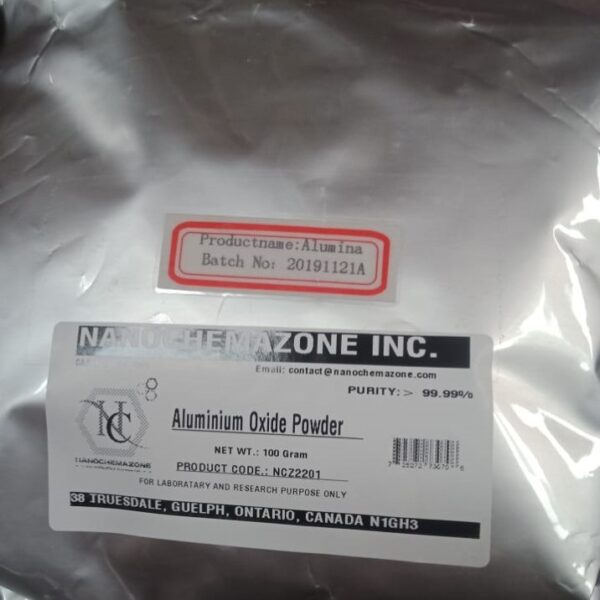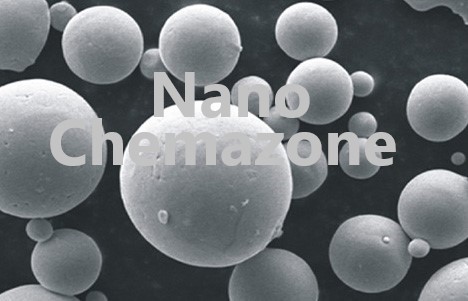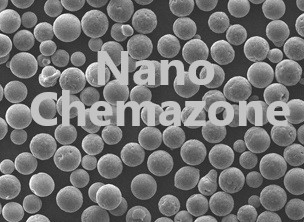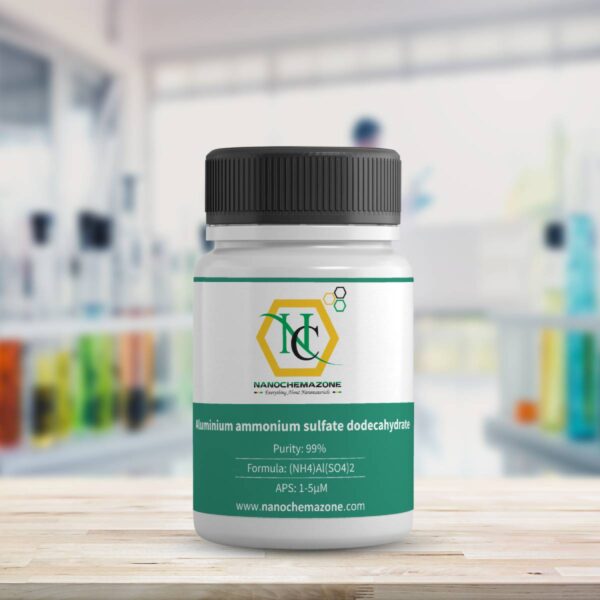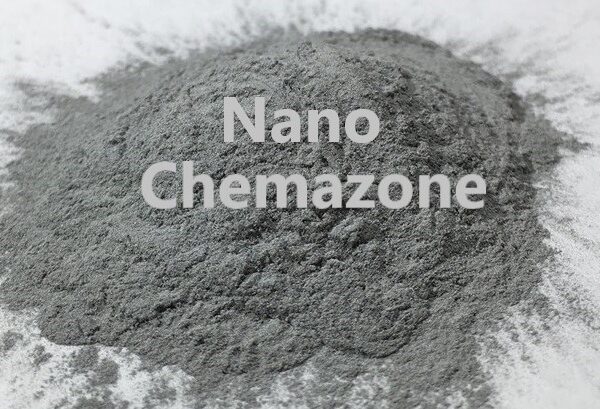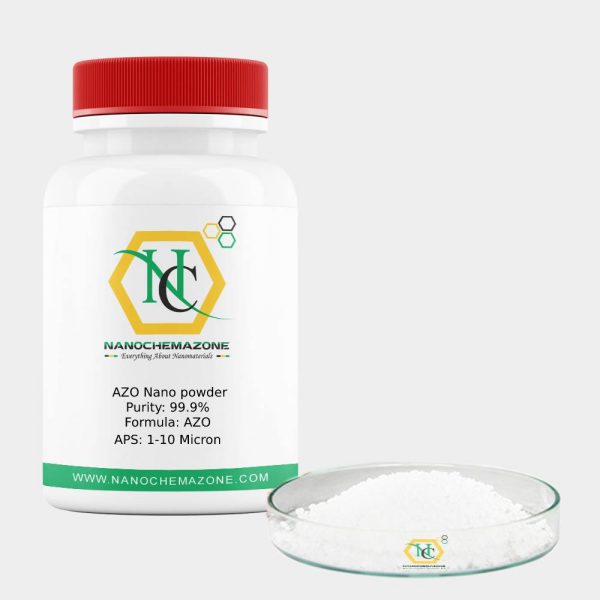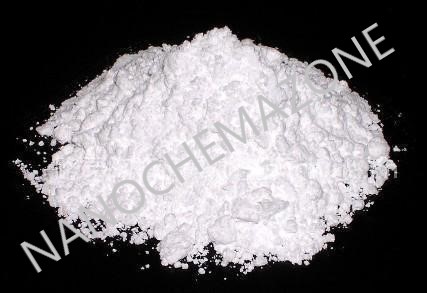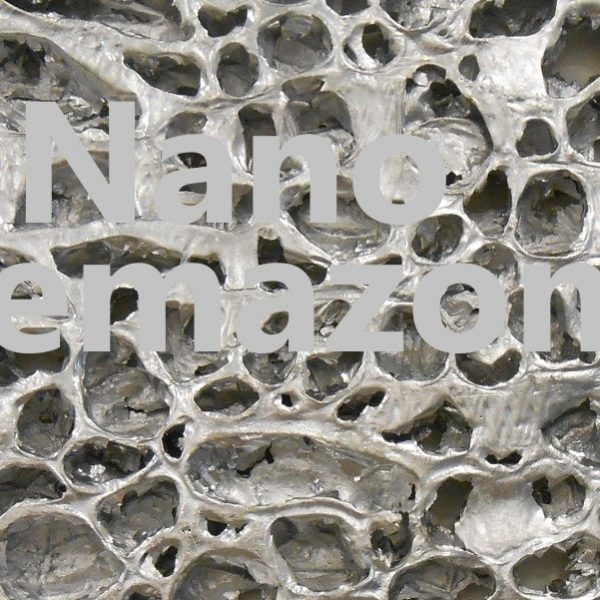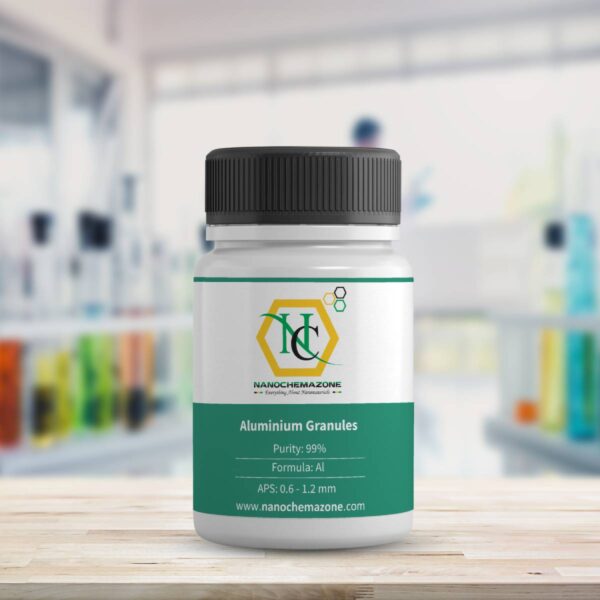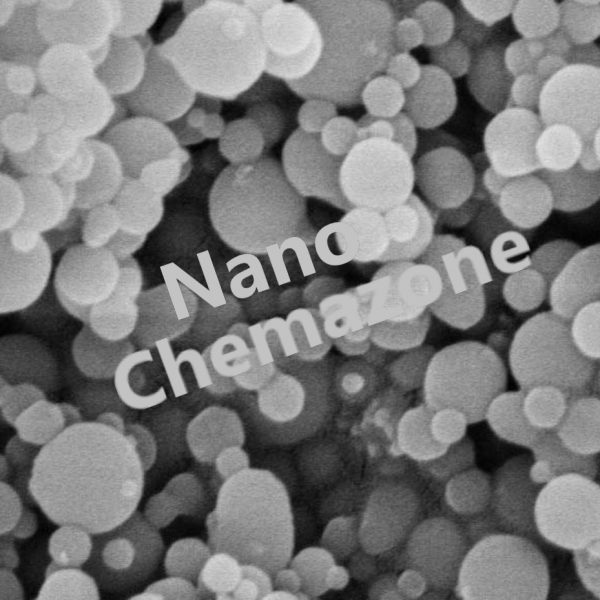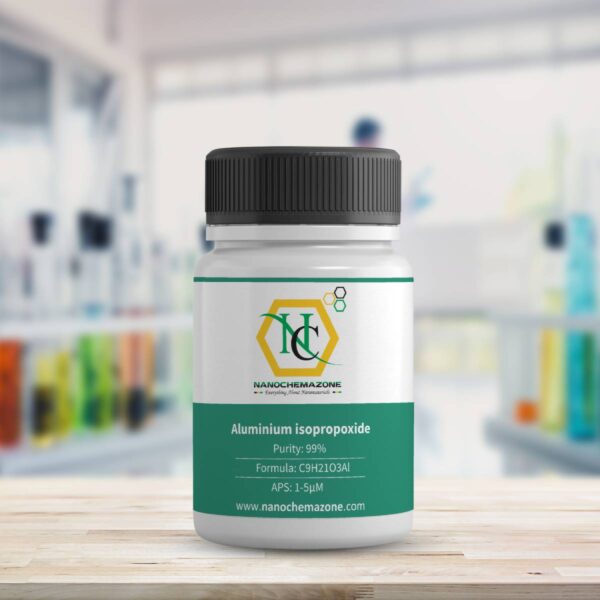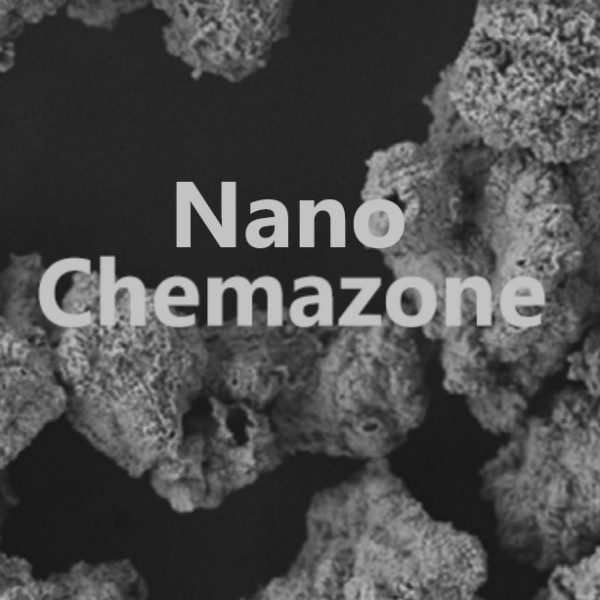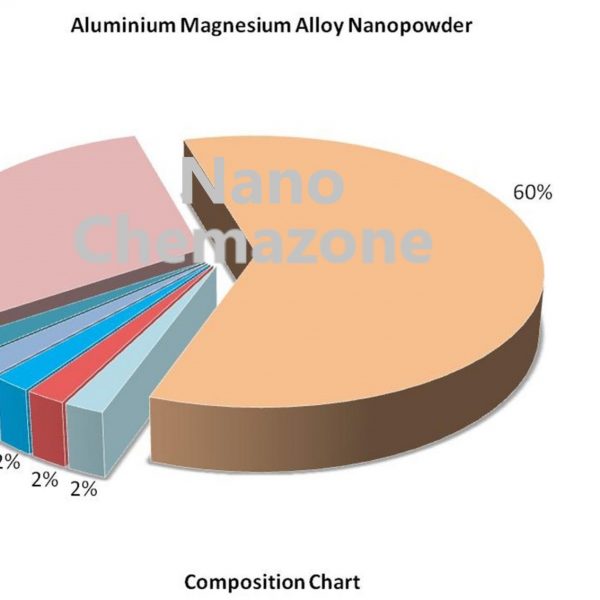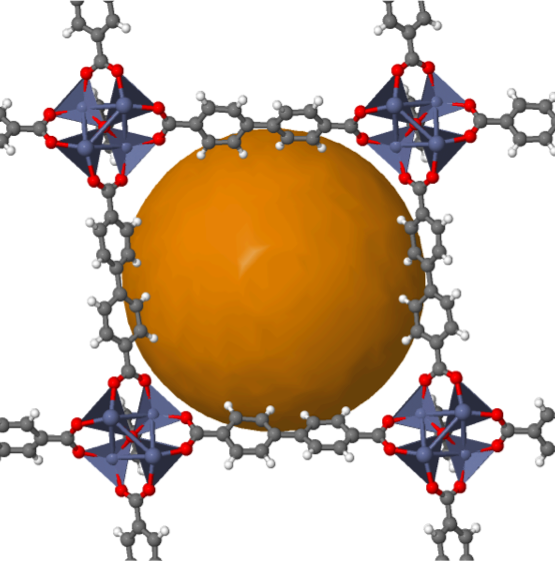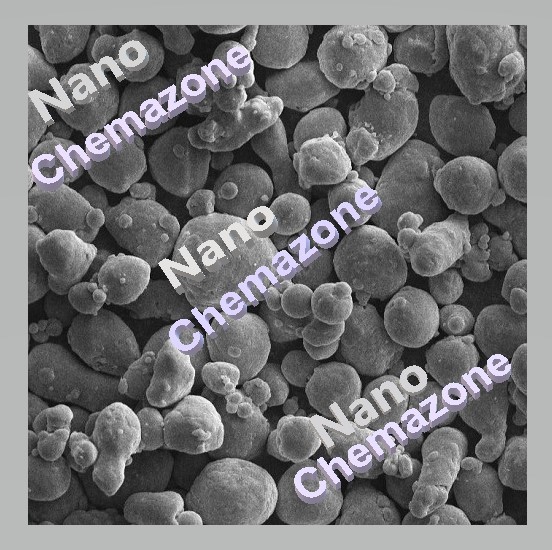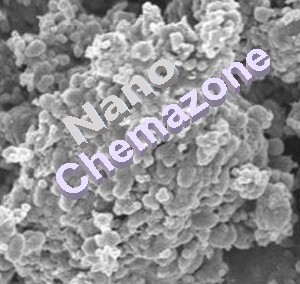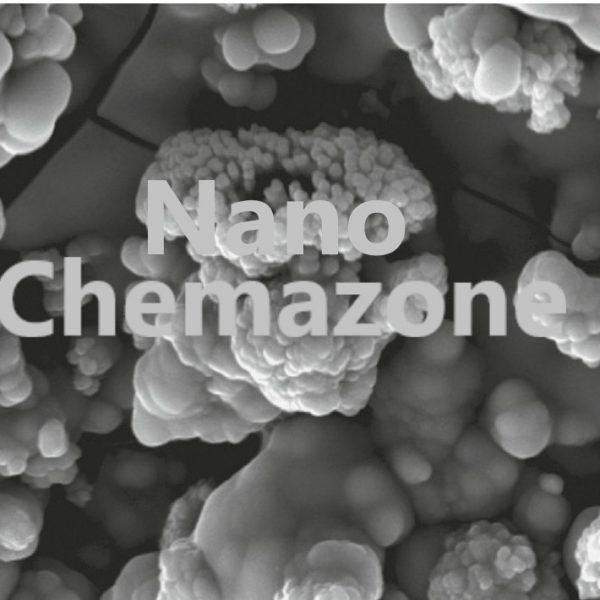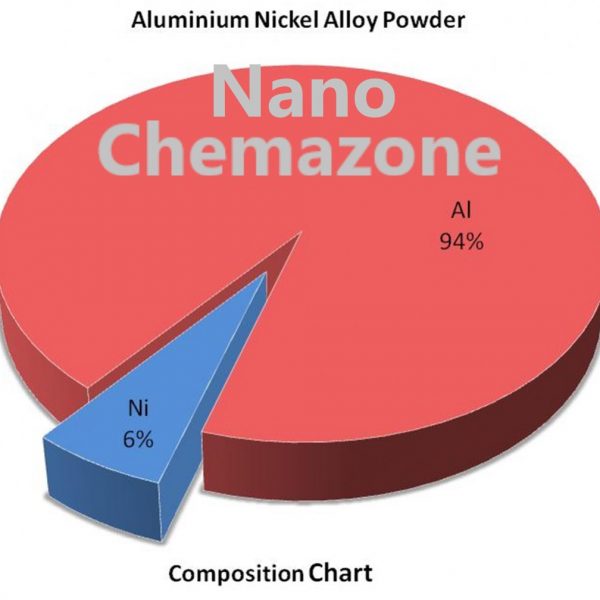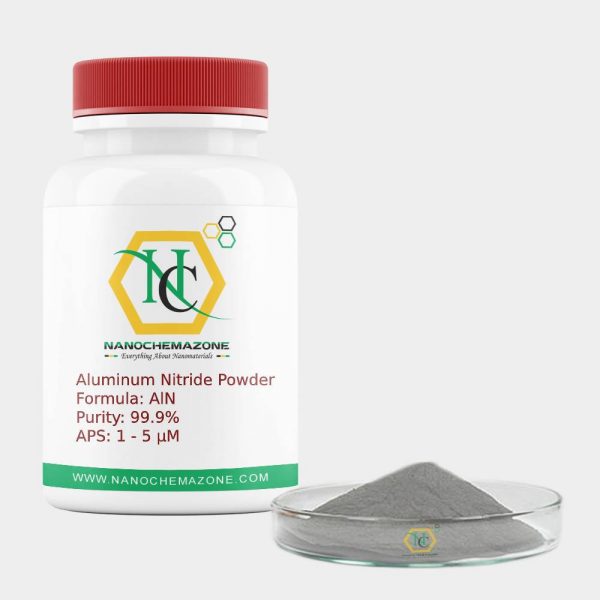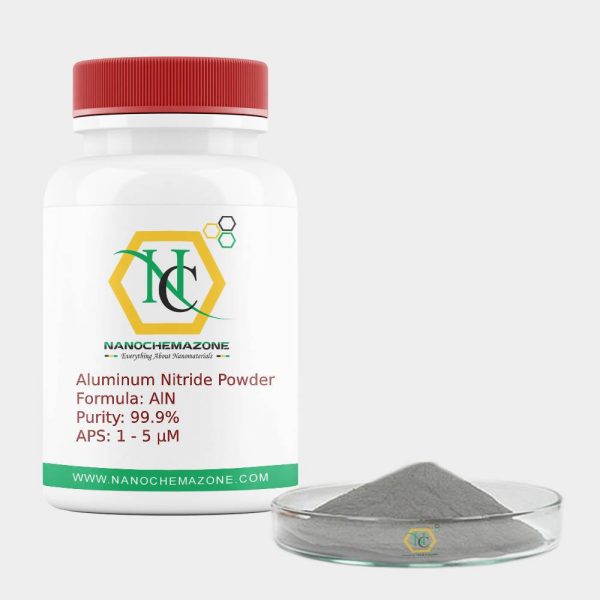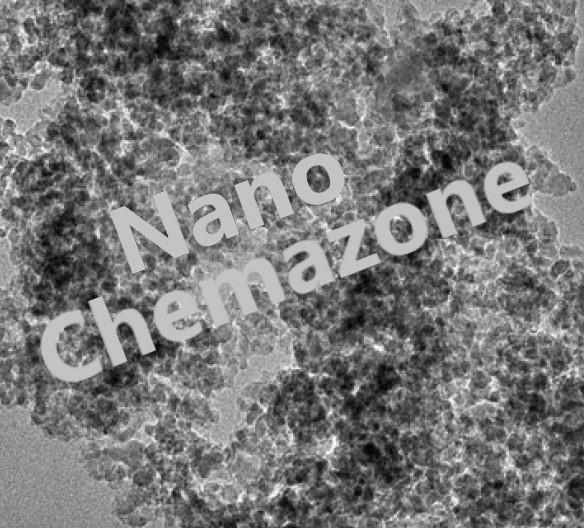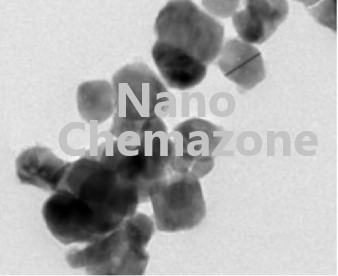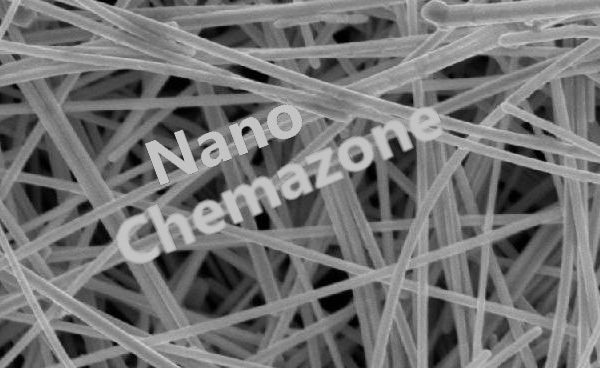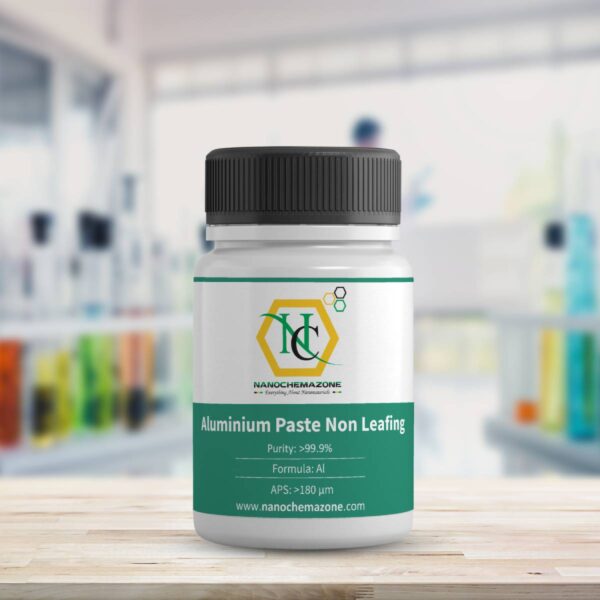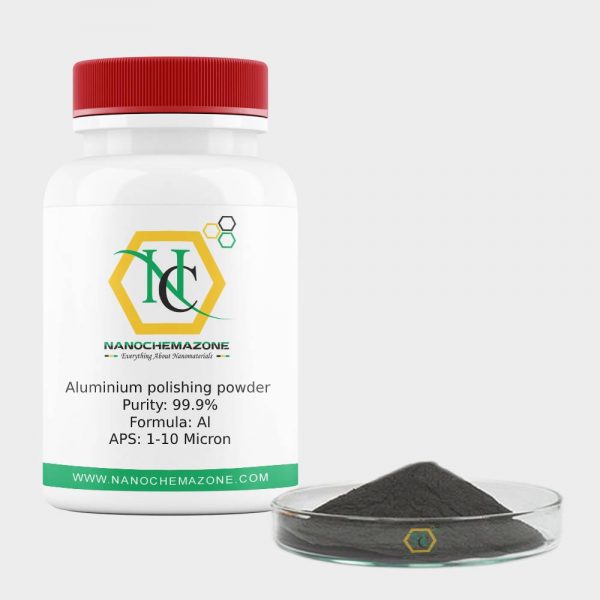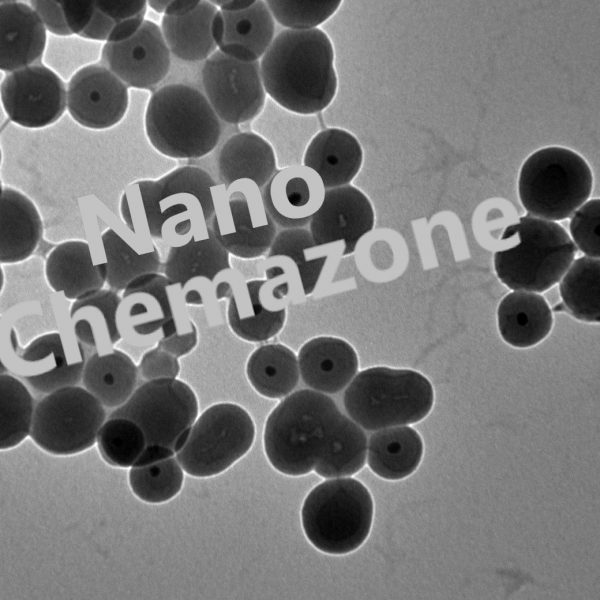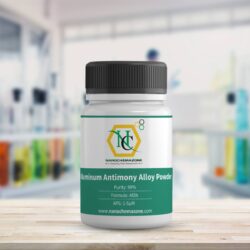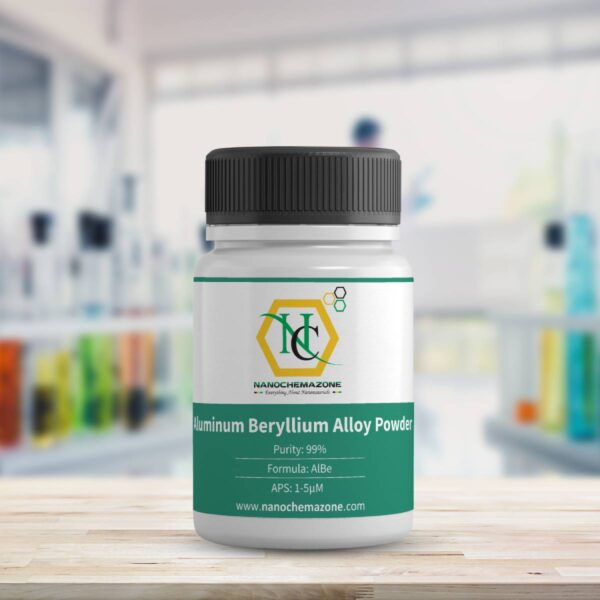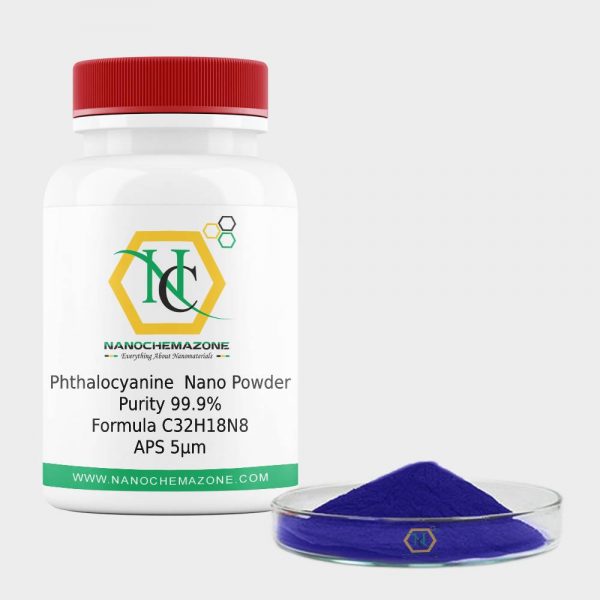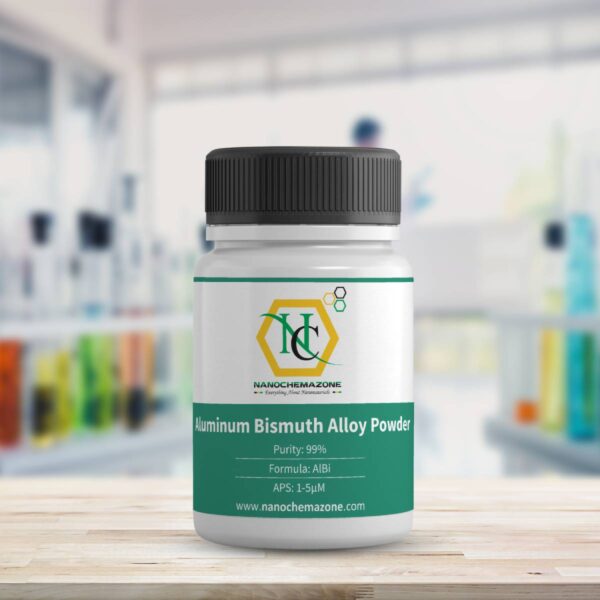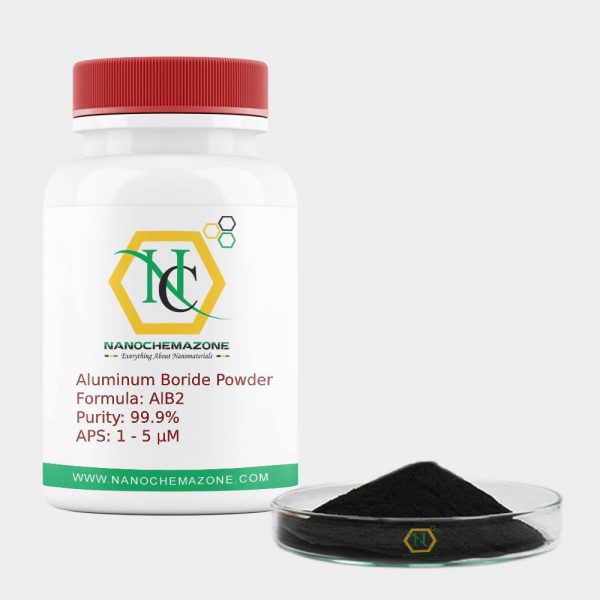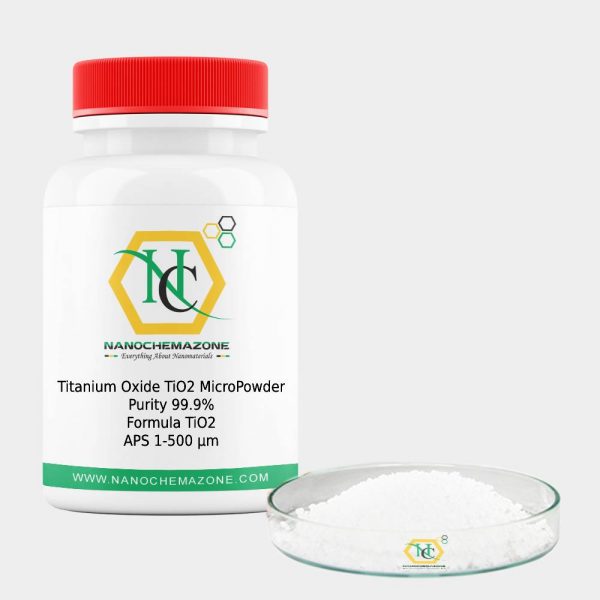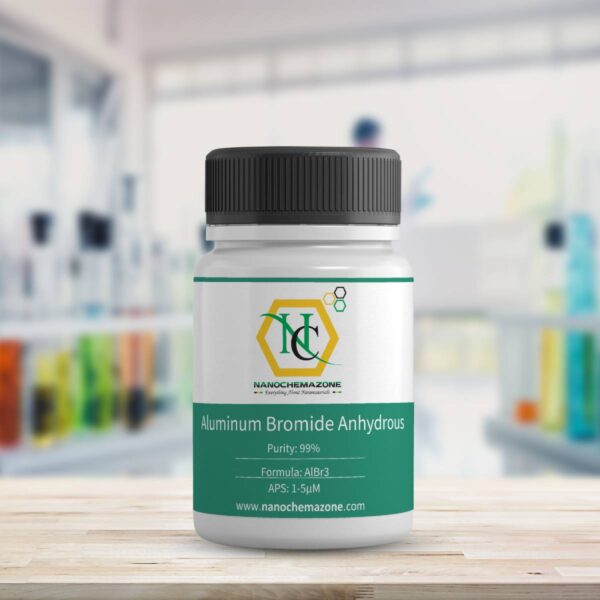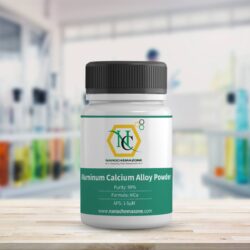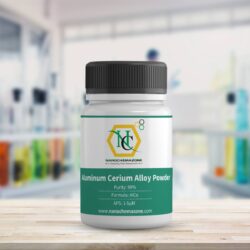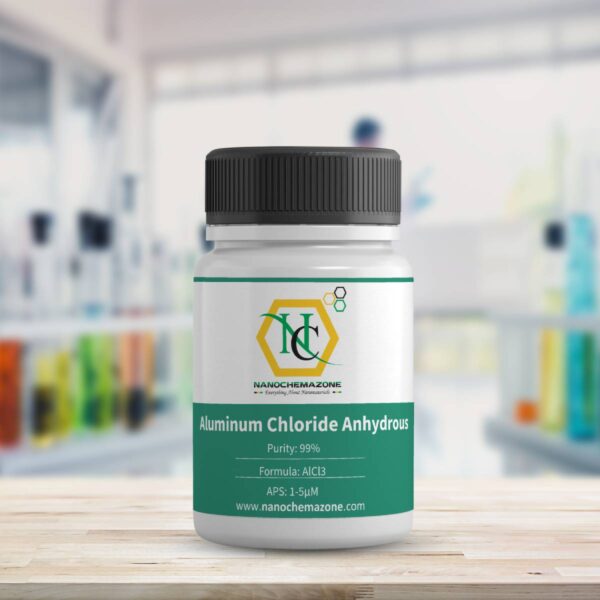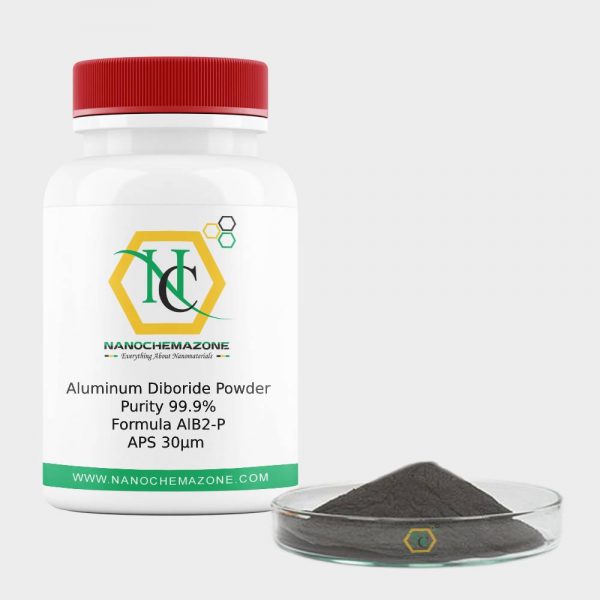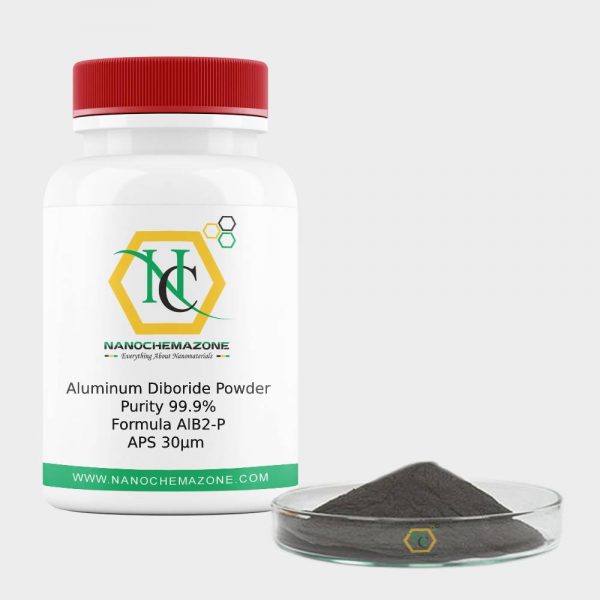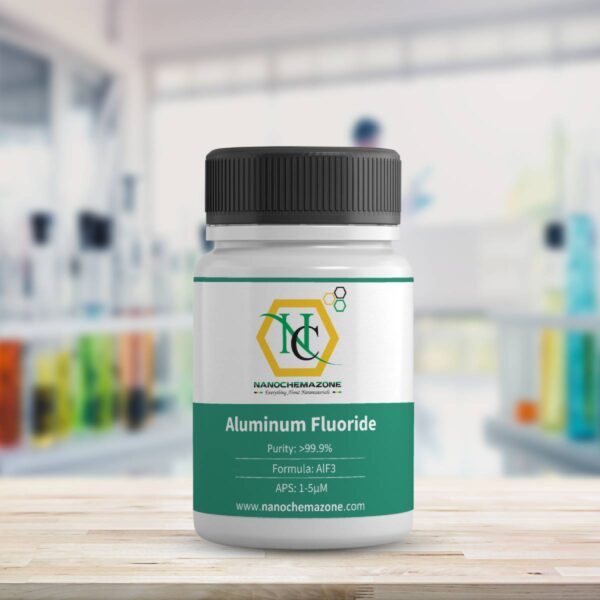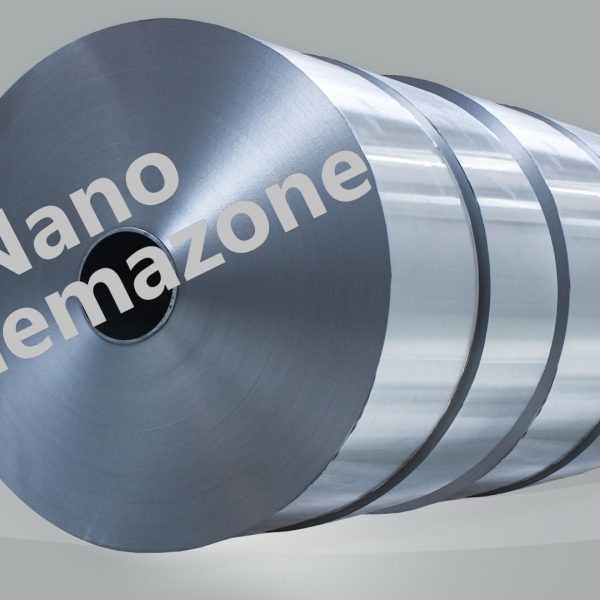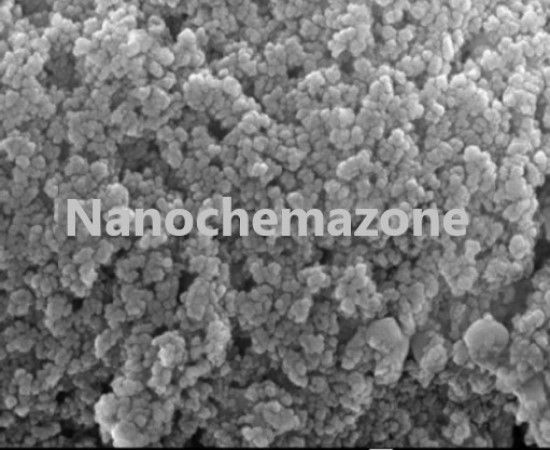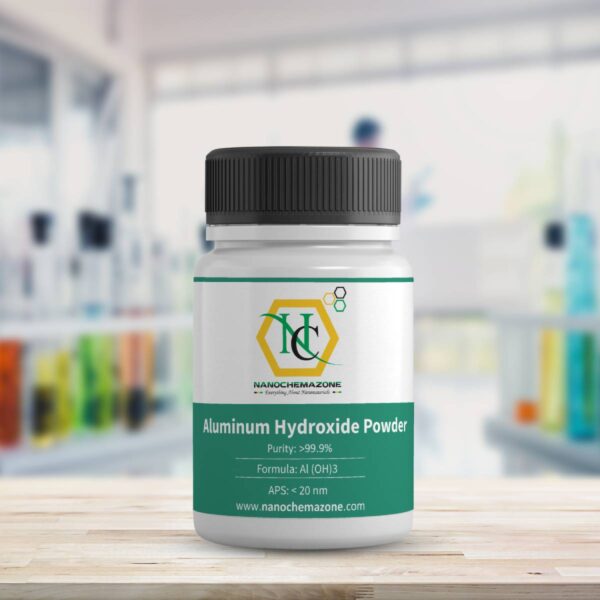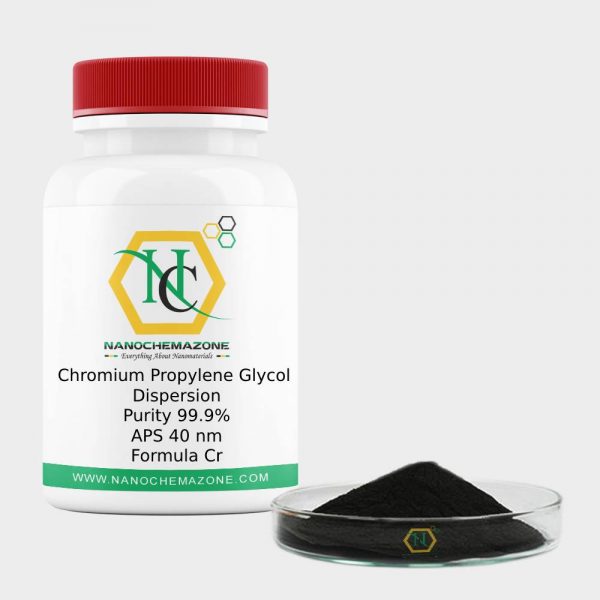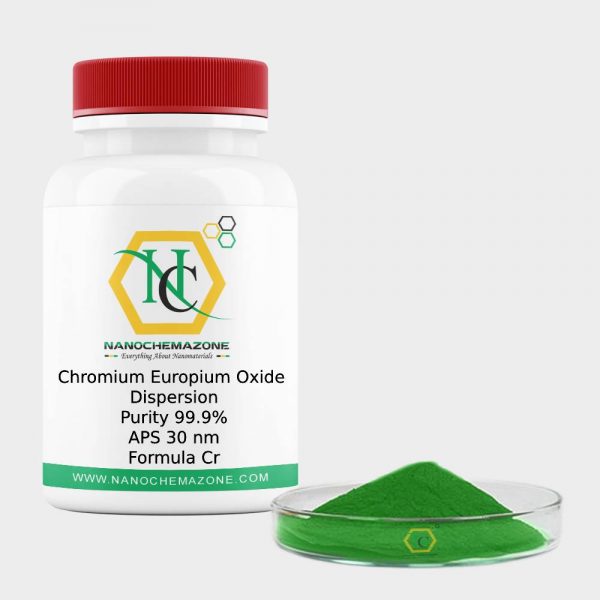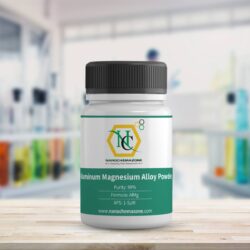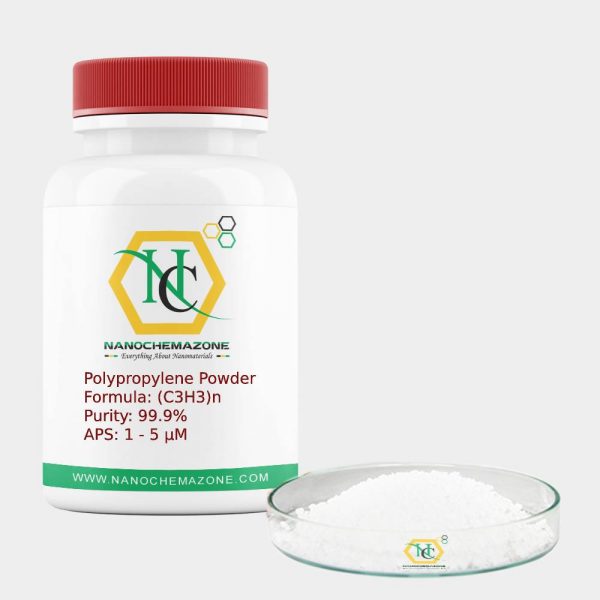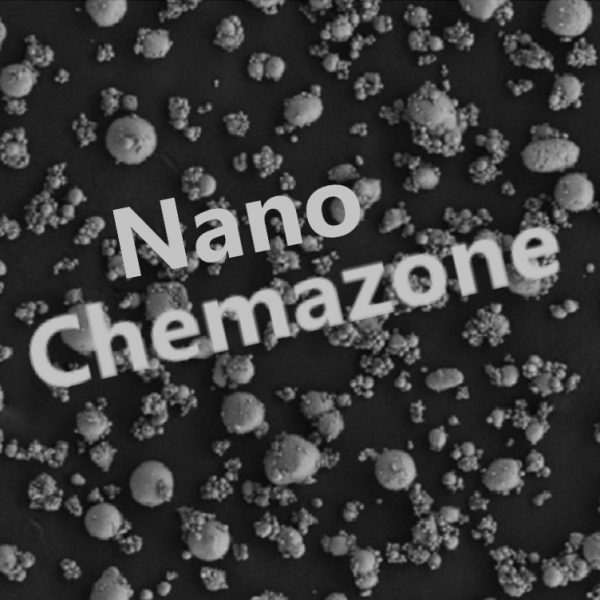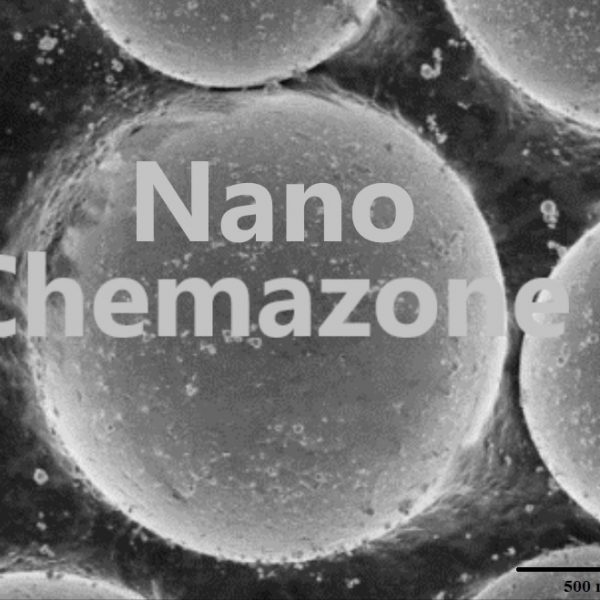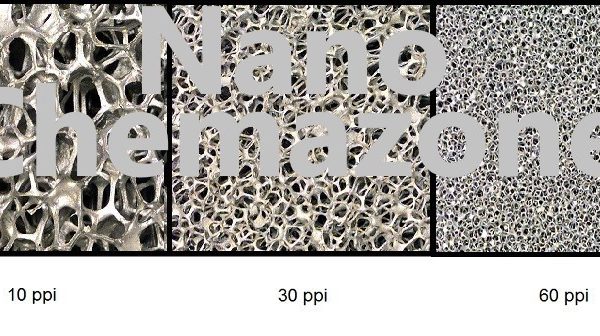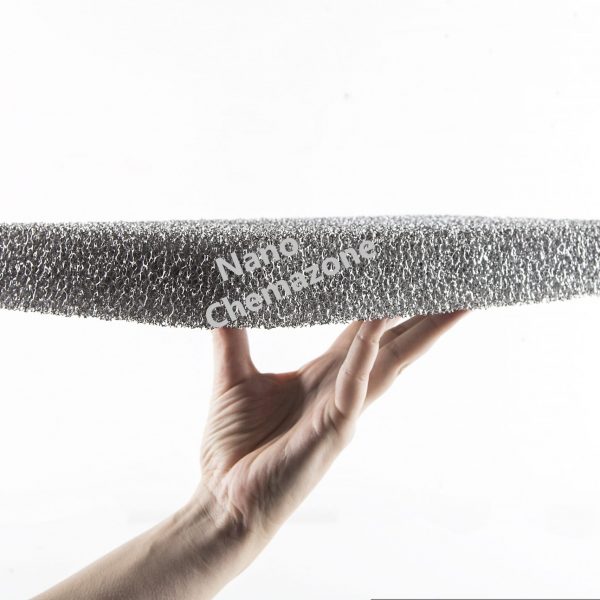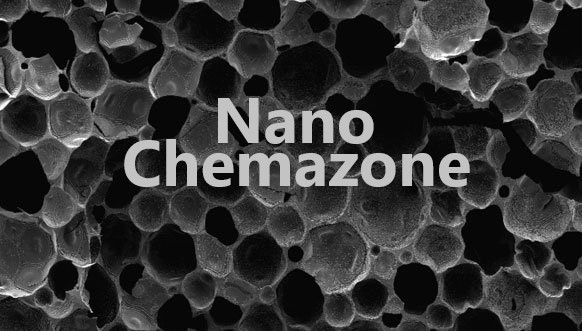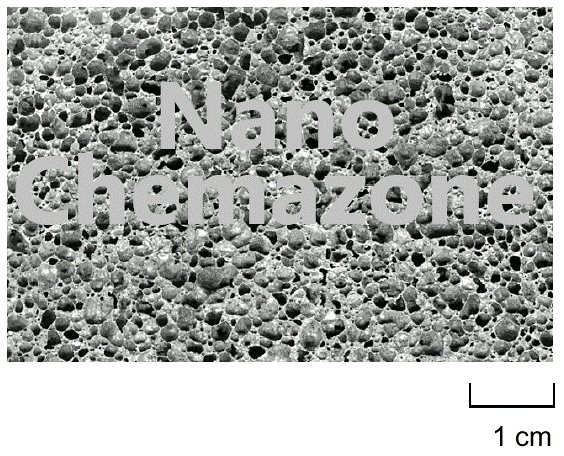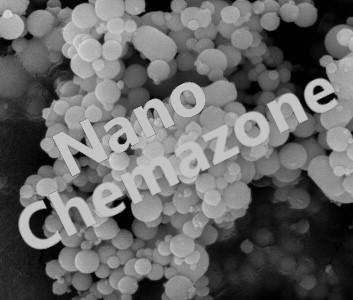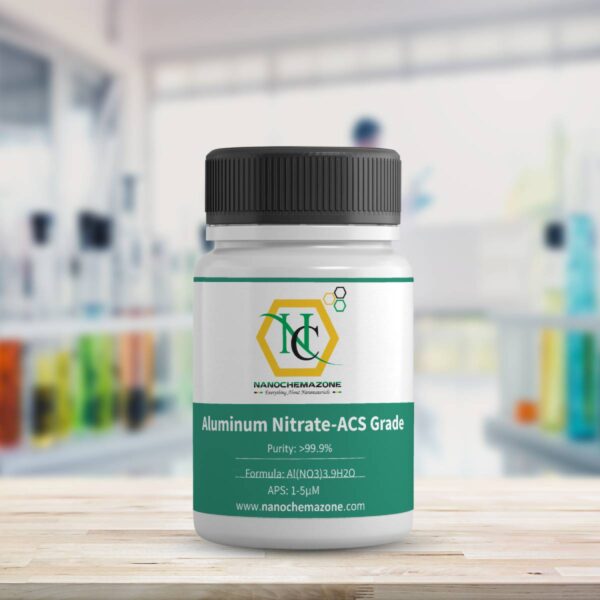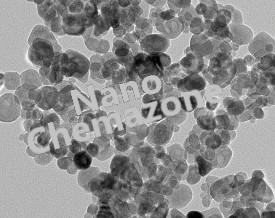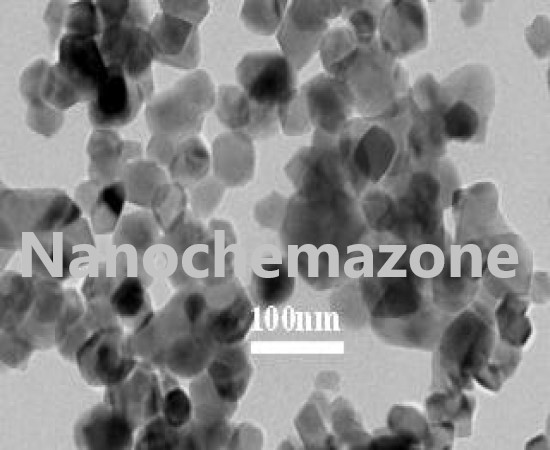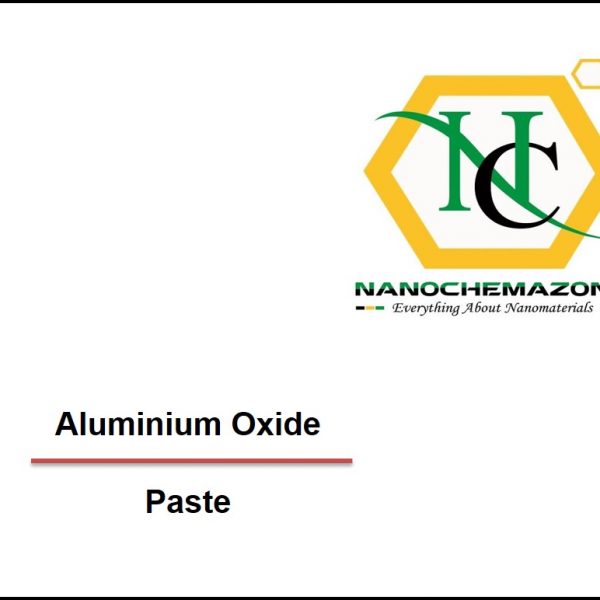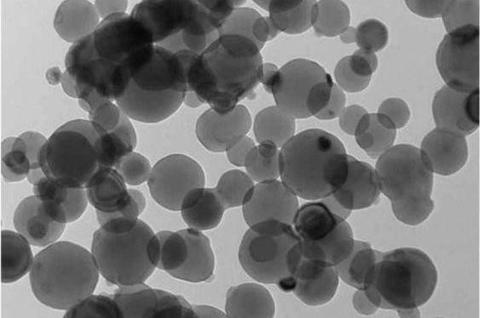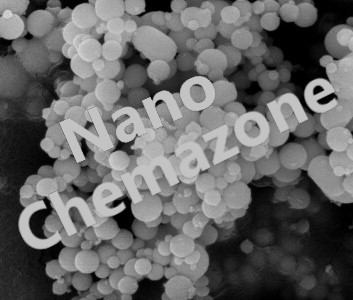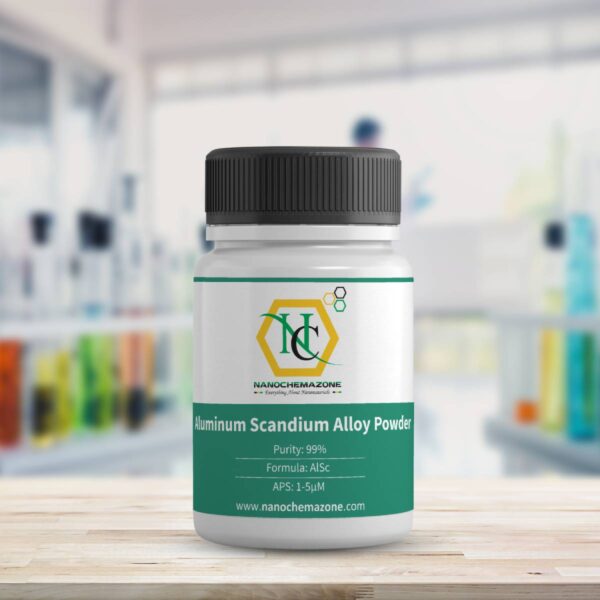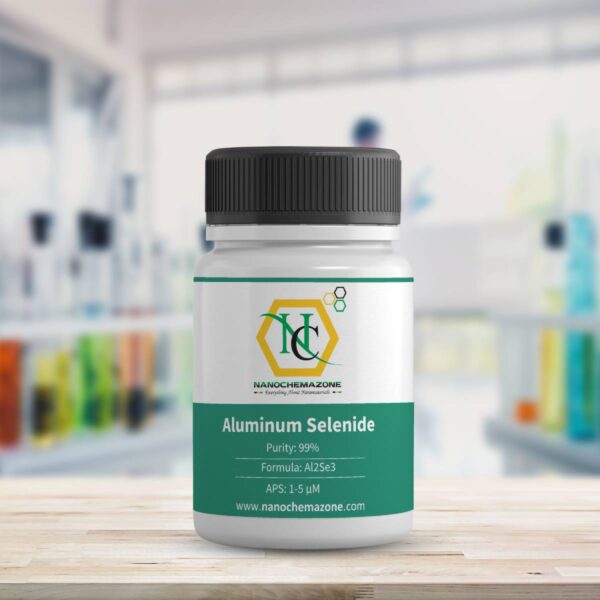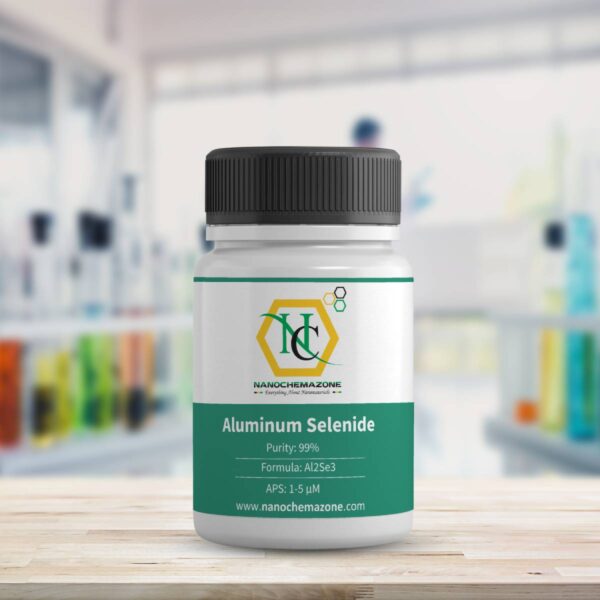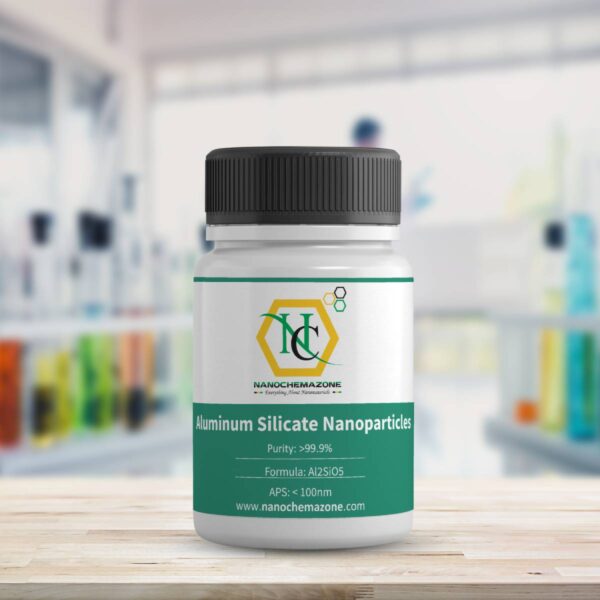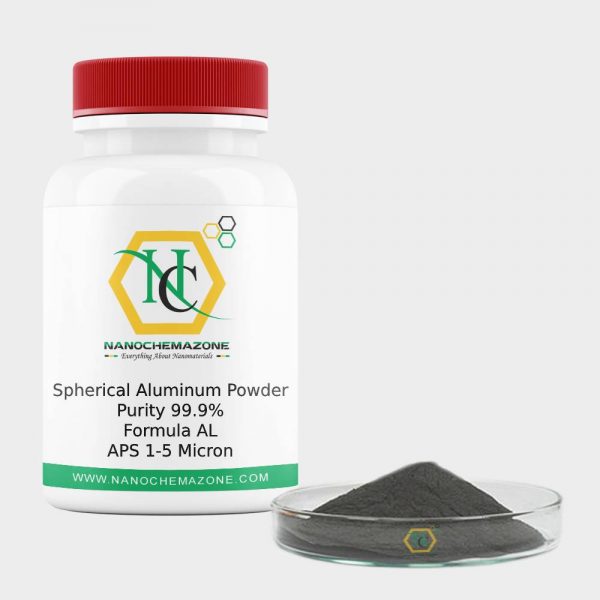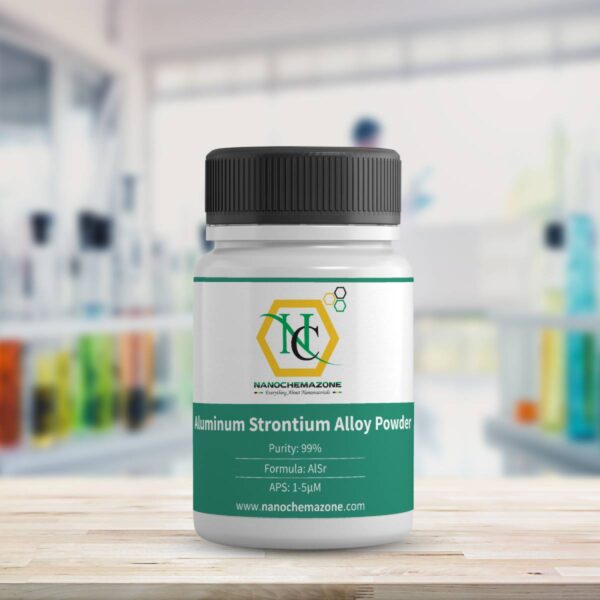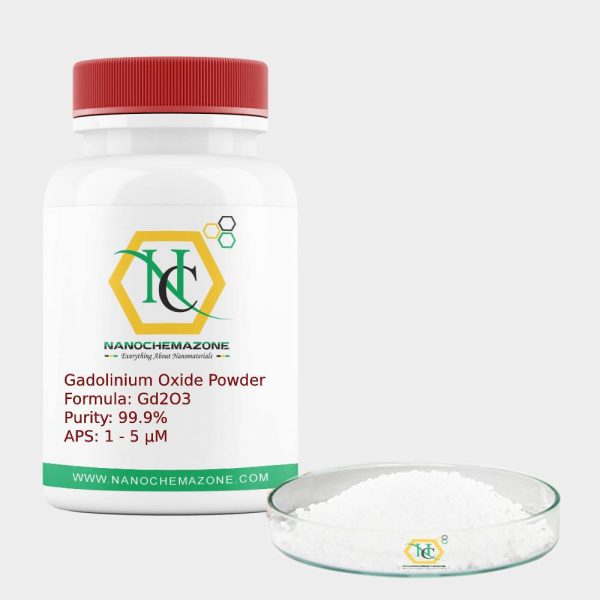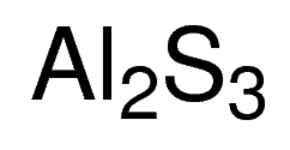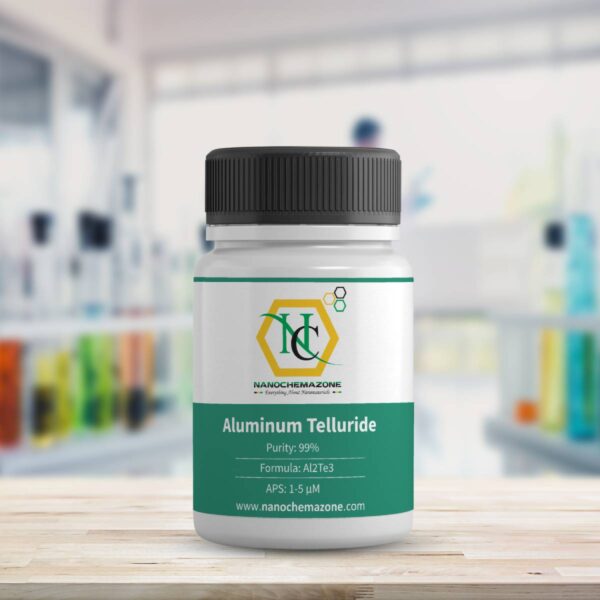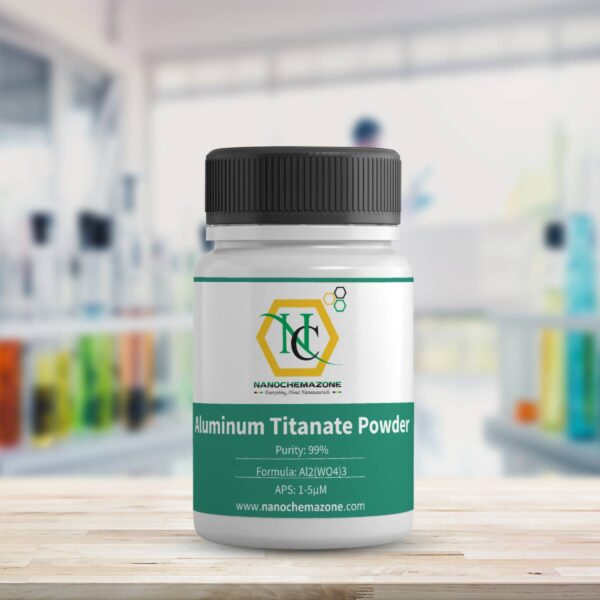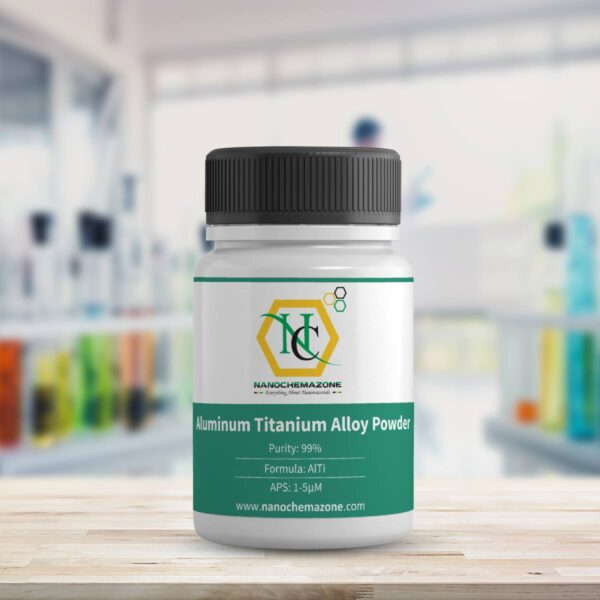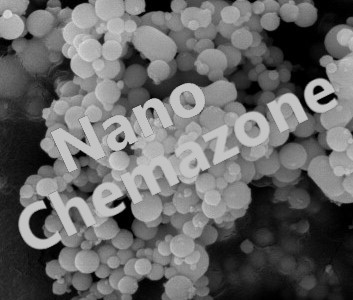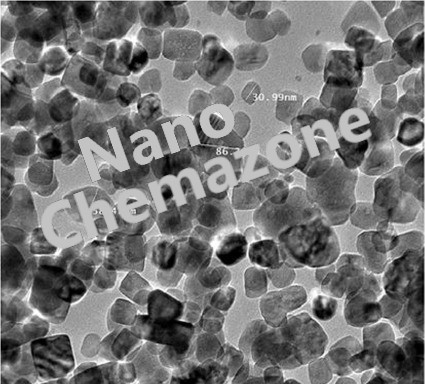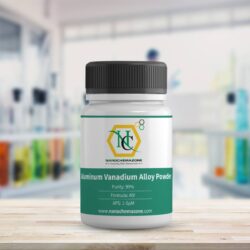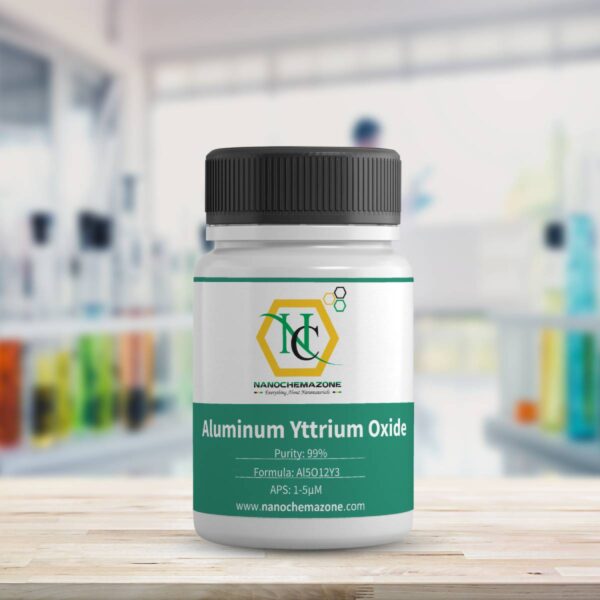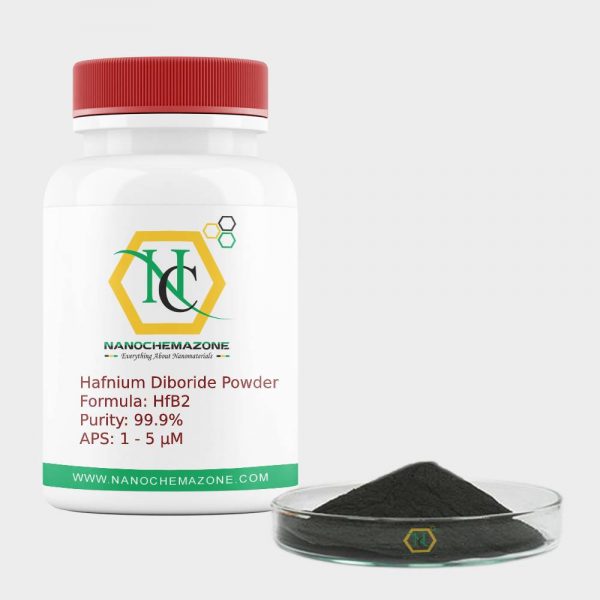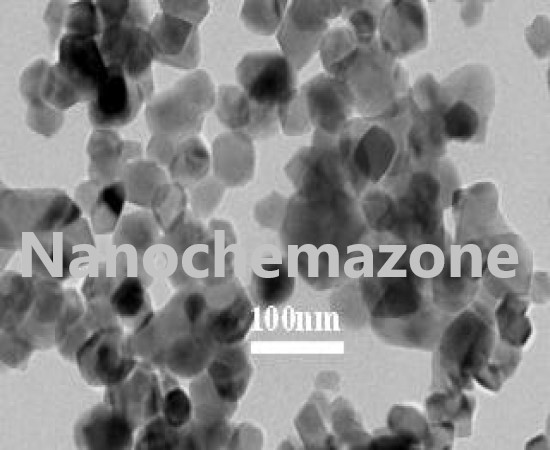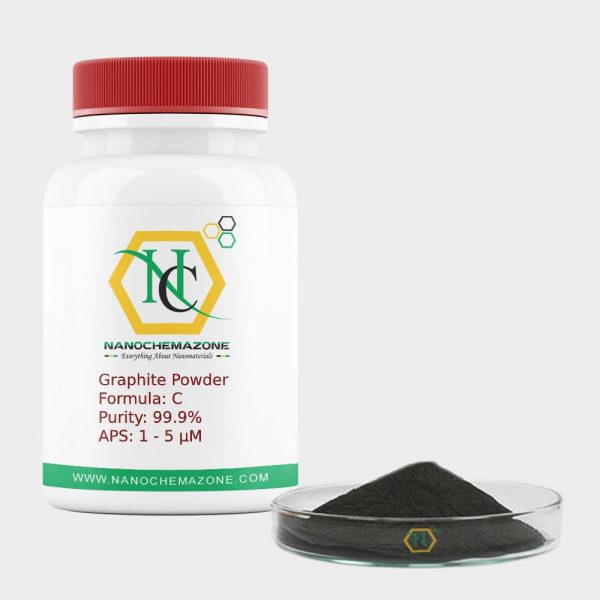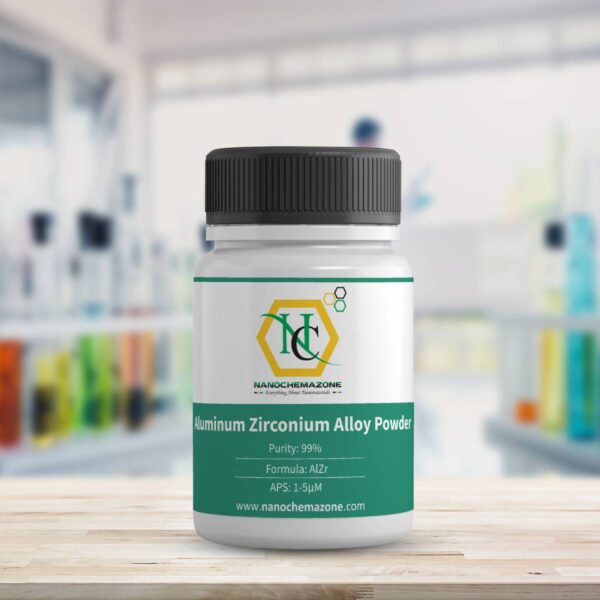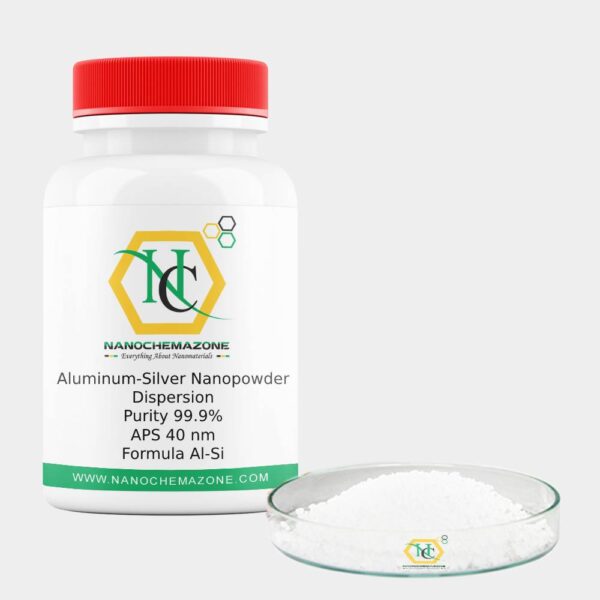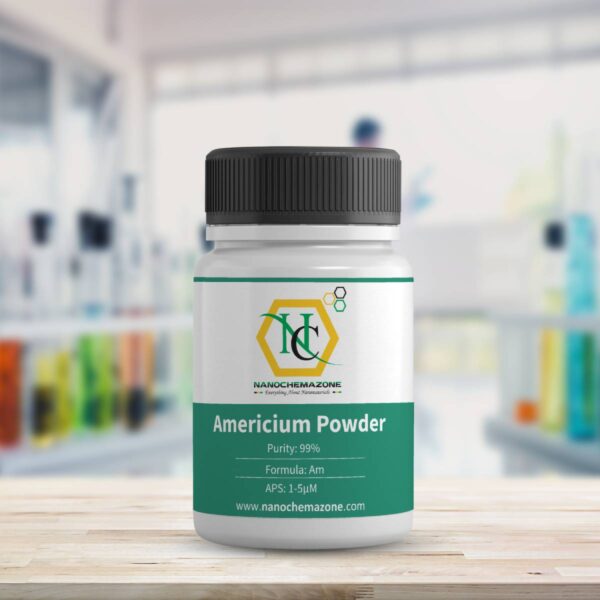2 Methylimidazole Zinc Salt
Product Name: 2 Methylimidazole Zinc Salt
| Product | 2 Methylimidazole Zinc Salt |
| CAS No. | 59061-53-9 |
| Odor | Odorless Powder |
| Purity | ≥ 99 % |
| APS | 1-5 um |
| Ingredient | C8H10N4Zn |
| Product Code | NCZ-MS-101 |
3D Freestanding Graphene Foam
| Product Name |
3D Freestanding Graphene Foam |
| Stock No. | NCZ-GSW-0023 |
| Purity | > 99.9% |
| Graphene Film | |
| FET Electron Mobility on Al2O3 | 2000 cm2/Vs |
| Hall Electron Mobility on SiO2/Si | 4000 cm2/Vs |
| Sheet Resistance | <600Ω/sq |
| Custom Order | <300Ω/sq |
| Transparency | >95% |
3D Graphene on Nickel/Copper Foam
| Sheet Resistance | <600Ω/sq |
| Custom Order | <300Ω/sq |
| Transparency | >95% |
| Product Name |
3D Graphene on Nickel/Copper Foam |
| Stock No. | NCZ-GSW-0022 |
| Purity | > 99.9% |
| Graphene Film | |
| FET Electron Mobility on Al2O3 | 2000 cm2/Vs |
| Hall Electron Mobility on SiO2/Si | 4000 cm2/Vs |
Acibenzolar S Methyl
Product Name: Acibenzolar S Methyl
| Product | Acibenzolar S Methyl |
| CAS No. | 135158-54-2 |
| Color | Pale, Light Orange |
| Purity | ≥ 99 % |
| APS | 1-5 um (can be customised) |
| Ingredient | C8H6N2OS2 |
| Product Code | NCZ-MS-102 |
Ag Nanoparticles Aqueous Dispersion
Product Name: Ag Nanoparticles Aqueous Dispersion
| Product | Ag Nanoparticles Aqueous Dispersion |
| CAS No. | 7440-22-4 |
| Appearance | Gray Powder |
| Purity | 99.9% |
| APS | 30 nm (Can be customized) |
| Ingredient | Ag |
| Product Code | NCZ-NSC414/20 |
Silver Ag Dispersion Description :
There are many ways silver nanoparticles can be synthesized; one method is through monosaccharides. This includes glucose, fructose, maltose, maltodextrin, etc., but not sucrose.
Ag Nanoparticles Aqueous Dispersion is also a simple method to reduce silver ions back to silver nanoparticles as it usually involves a one-step process. There have been methods that indicated that these reducing sugars are essential to the formation of silver nanoparticles.
Many studies indicated that this method of green synthesis, specifically using Cacumen platycladi extract, enabled the reduction of silver. Additionally, the size of the nanoparticle could be controlled depending on the concentration of the extract. Ag Nanoparticles Aqueous Dispersion that the higher concentrations correlated to an increased number of nanoparticles.
Smaller nanoparticles were formed at high pH levels due to the concentration of the monosaccharides. Another method of silver nanoparticle synthesis includes the use of reducing sugars with alkali starch and silver nitrate.
The reducing sugars have free aldehyde and ketone groups, which enable them to be oxidized into gluconate. The monosaccharide must have a free ketone group because to act as a reducing agent it first undergoes tautomerization. Besides, if the aldehydes are bound, it will be stuck in cyclic form and cannot act as a reducing agent.
For example, glucose has an aldehyde functional group that can reduce silver cations to silver atoms and is then oxidized to gluconic acid. The reaction for the sugars to be oxidized occurs in aqueous solutions.
The capping agent is also not present when heated.The growth of nanoseeds involves placing the seeds into a growth solution. The growth solution requires a low concentration of a metal precursor, ligands that will readily exchange with preexisting seed ligands, and a weak or very low concentration of reducing agent. The reducing agent must not be strong enough to reduce metal precursors in the growth solution in the absence of seeds.
Otherwise, the growth solution will form new nucleation sites instead of growing on preexisting ones (seeds). Growth is the result of the competition between surface energy (which increases unfavorably with growth) and bulk energy (which decreases favorably with growth).
The balance between the energetics of growth and dissolution is the reason for uniform growth only on preexisting seeds (and no new nucleation). Growth occurs by the addition of metal atoms from the growth solution to the seeds, and ligand exchange between the growth ligands (which have a higher binding affinity) and the seed ligands.
The range and direction of growth can be controlled by nano speed, the concentration of metal precursor, ligand, and reaction conditions (heat, pressure, etc.). Controlling stoichiometric conditions of growth solution controls the ultimate size of the particle. For example, a low concentration of metal seeds to metal precursors in the growth solution will produce larger particles.
Capping agent has been shown to control the direction of growth and thereby shape. Ligands can have varying affinities for binding across a particle. Differential binding within a particle can result in dissimilar growth across particles. This produces anisotropic particles with nonspherical shapes including prisms, cubes, and rods.
Silver Ag Dispersion Related Information
Storage Conditions: Airtight sealed, avoid light and keep dry at room temperature. Please contact us for customization and price inquiry Email: contact@nanochemazone.com Note: We supply different size ranges of Nano and micron as per the client’s requirements and also accept customization in various parameters.Ag-Doped Antibacterial Nanopowder Dispersion
Ag-Doped Antibacterial Nanopowder Dispersion
| Product | Ag-Doped Antibacterial Nanopowder Dispersion |
| CAS No. | 7440-22-4 |
| Appearance | Gary |
| Purity | 99.9% |
| APS | 30 nm(Can be customized) |
| Ingredient | Ag |
| Product Code | NCZ-NSC430/20 |
Ag-Doped Antibacterial Nanopowder Dispersion Description :
Ag-Doped Antibacterial Nanopowder Dispersion is nanoparticles of silver of between 1 nm and 100 nm in size. While frequently described as being 'silver' some are composed of a large percentage of silver oxide due to their large ratio of surface to bulk silver atoms.
Numerous shapes of Ag-doped Antibacterial Nanopowder Dispersion can be constructed depending on the application at hand. Commonly used silver nanoparticles are spherical, but diamond, octagonal, and thin sheets are also common.
Their extremely large surface area permits the coordination of a vast number of ligands. The properties of silver nanoparticles applicable to human treatments are under investigation in laboratory and animal studies, assessing potential efficacy, toxicity, and costs.
The most common methods for nanoparticle synthesis fall under the category of wet chemistry or the nucleation of particles within a solution.
This nucleation occurs when a silver ion complex, usually Ag-Doped Antibacterial Nanopowder Dispersion, is reduced to colloidal silver in the presence of a reducing agent. When the concentration increases enough, dissolved metallic silver ions bind together to form a stable surface.
The surface is energetically unfavorable when the cluster is small because the energy gained by decreasing the concentration of dissolved particles is not as high as the energy lost from creating a new surface.
When the cluster reaches a certain size, known as the critical radius, it becomes energetically favorable, and thus stable enough to continue to grow.
This nucleus then remains in the system and grows as more silver atoms diffuse through the solution and attach it to the surface.
When the dissolved concentration of atomic silver decreases enough, it is no longer possible for enough atoms to bind together to form a stable nucleus.
At this nucleation threshold, new nanoparticles stop being formed, and the remaining dissolved silver is absorbed by diffusion into the growing nanoparticles in the solution.
As the particles grow, other molecules in the solution diffuse and attach to the surface. This process stabilizes the surface energy of the particle and blocks new silver ions from reaching the surface.
The attachment of these capping/stabilizing agents slows and eventually stops the growth of the particle.
The most common capping ligands are trisodium citrate and polyvinylpyrrolidone (PVP), but many others are also used in varying conditions to synthesize particles with particular sizes, shapes, and surface properties.
There are many different wet synthesis methods, including the use of reducing sugars, nitrate reduction, reduction via sodium borohydride.
The silver mirror reaction, the polyol process, seed-mediated growth, and light-mediated growth. Each of these methods, or a combination of methods, will offer differing degrees of control over the size distribution as well as distributions of geometric arrangements of the nanoparticle.
Ag-Doped Antibacterial Nanopowder Dispersion Related Information
Storage Conditions: Airtight sealed, avoid light and keep dry at room temperature. Please contact us for customization and price inquiry Email: contact@nanochemazone.com Note: We supply different size ranges of Nano and micron as per the client’s requirements and also accept customization in various parameters.AgI Silica Core Shell Nanoparticles
Silver Iodide Silica Core Shell Nanoparticles
| MF: | AgI/SiO2 |
| Chemical Name: | Silver Iodide Silica Core Shell Nanoparticles |
| Purity: | > 99.99% |
| APS: | 80-100 nm (Size Customization possible) |
| Form: | Nanopowder/Nanodispersion |
| Product Number: | NCZCS101-19 |
Alumina Dispersion
| MF: | Al |
| Chemical Name: |
Nano Alumina Dispersion |
| Purity: | > 99.99% |
| APS: | 15-30 nm (Size Customization possible) |
| Form: | Nanodispersion |
| Product Number: | NCZD1301 |
| CAS Number | 1344-28-1 |
Alumina nanoparticles powder
Alumina nanoparticles powder
| MF: | Al2O3 |
| Chemical Name: | Aluminum Oxide Nanoparticle Powder |
| Purity: | > 99.99% |
| APS: | 20-100 nm (Customization is possible) |
| Form: | Nanopowder/Dispersion |
| Product Number: | NCZ2201-G |
| CAS Number | 1344-28-1 |
Alumina nanoparticles powder
The aluminum Oxide gamma form is also available on request. Note: We can supply different size products of microparticles and Nanoparticles Size range powder according to the client’s requirements.Alumina Powder
Alumina Powder
#Aluminum oxide particles, #Alumina powder, #Alumina micron particles, #Alumina micropowder
| MF: | Al2O3 |
| Chemical Name: | Alumina Powder |
| Purity: | > 99.9% |
| APS: | 1-45 Micro (Customization is possible) |
| Form: | powder/Dispersion |
| Product Number: | NCZM2201-20 |
| CAS Number | 1344-28-1 |
Alumina Slurry Polishing
Alumina Slurry Polishing
Alumina Slurry Polishing (Al2O3, Purity: 99.9 %, APS: 50-80 nm)| Product | Alumina Slurry Polishing |
| CAS | 1344-28-1 |
| Product Number | NCZ-D-1501N |
| APS | 50-80 nm (Size Customization is possible) |
| Purity | 99.9% |
| Form | Liquid |
| Colour | White |
| pH value | 4-5 |
| Concentration | 10 wt% to 40% (Available as per Customer requirement) |
| Dispersing Agent | Organic Solvent (DMF), IPA Ethanol, Toluene, Water (H2O) |
| Available Quantities | 10 ml, 50 ml, 100 ml, 250 ml, and larger Industrial quantities |
Aluminium Alloy Nanopowder
| MF: | Al |
| Chemical Name: |
Aluminium Alloy Powder |
| Purity: | > 99.99% |
| APS: | 80-100 nm (Size Customization possible) |
| Form: | Nanopowder |
| Product Number: | NCZA101 |
| CAS Number: | 7429-90-5 |
Aluminium Casting Alloy Powder
| MF: | Al |
| Chemical Name: |
Aluminum Casting Alloy Powder |
| Purity: | > 99.99% |
| APS: | 80-100 nm (Size Customization possible) |
| Form: | Nanopowder |
| Product Number: | NCZA102 |
| CAS Number: | 7429-90-5 |
Aluminium Fluoride Powder
Product Name: Aluminium Fluoride Powder
| Product | Aluminium Fluoride Powder |
| CAS No. | 7784-18-1 |
| Color | White |
| Purity | ≥ 99 % |
| APS | 1-5 um (can be customised) |
| Ingredient | AlF3 |
| Product Code | NCZ-MS-103 |
Aluminium Hydroxide nanoparticles
Aluminium Hydroxide nanoparticles
| MF: | Al(OH)3 |
Chemical Name: |
Aluminium Hydroxide |
| Purity: | > 99.99% |
| APS: | 20 nm (Size Customization possible) |
| Form: | Nanopowder |
| Product Number: | #NCZ301 |
| CAS Number | 21645-51-2 |
Aluminium Hydroxide nanoparticles
Note: We can supply different size products of microparticles and Nanoparticles Size range powder according to the client’s requirements.Aluminium Magnesium Alloy Nanopowder
| MF: | Al:Mg |
| Chemical Name: |
Aluminium Magnesium Alloy Nanopowder |
| Purity: | > 99.99% |
| APS: | <80 nm (Size Customization possible) |
| Form: | Nanopowder |
| Product Number: | NCZA103 |
| CAS Number: | 7429-90-5 / 7439-95-4 |
Aluminium Metal Organic Framework (Al-MIL-53)
| Product Name |
Aluminum Metal-Organic Framework |
| Stock No. | NCZMOF102 |
| CAS | 7429-90-5 |
| Purity | 99% |
| APS | 30-40 µm |
| Molecular Formula | C8H5AlO5 |
| Molecular Weight | 208.10g/ mol |
| Odour | Odorless |
| Color | White |
| Density | 0.4 g/cm3 |
| Pore Size | ~10Å |
| SSA | ~1100-1500 m²/g (BET) |
| Solubility | Ethanol |
| Application | Gas adsorption: Hydrogen gas |
| Linker | TPA, H2BDC, BDC (Terephthalic acid) |
Aluminium Micropowder
Aluminium Micropowder
Product Name: Aluminium Micropowder and micron particle size range
| MF: | Al |
| Purity: | > 99.99% |
| APS: | 40-50 µm (Size Customization possible) |
| Form: | Micro powder |
| Product Number: | NCZM101 |
| CAS Number | 7440-22-5 |
Aluminium Nickel Alloy Nanopowder
| MF: | Al:Ni |
| Chemical Name: |
Aluminium Nickel Alloy Powder |
| Purity: | > 99.99% |
| APS: | APS 70 nm, APS 10 µm, APS 40-50 µm (Size Customization possible) |
| Form: | Nanopowder and Micropowder |
| Product Number: | NCZA104 |
| CAS Number: | 12635-27-7 / 12635-29-9 |
Aluminium Nitride
| Product | Aluminum Nitride |
| CAS No. | 24304-00-5 |
| Appearance | Powder |
| Purity | 99.9% |
| APS | 1 – 5 Microns (Can be customized) |
| Ingredient | AlN |
| Product Code | NCZ-AE-108 |
Aluminium Oxide Dispersion
| MF: | Al2O3 |
| Chemical Name: |
Aluminium Oxide Dispersion |
| Purity: | >99.99% |
| APS: | 20-30 nm (Size Customization possible) |
| Form: | Nanodispersion |
| Product Number: | NCZD1401 |
| CAS Number | 1344-28-1 |
Aluminium Oxide Nanowires
| MF: | Al2O3 |
| Chemical Name: | Aluminium Oxide Nanowires |
| Purity: | > 99.99% |
| Diameter: | 2-6 nm (Customization is possible) |
| Length: | up to 200 µm (Customization is possible) |
| Form: | Nanowire |
| Product Number: | NCZW102 |
| CAS Number | 1344-28-1 |
Aluminium Silicon Alloy Nanopowder
Aluminium Silicon Alloy Nanopowder
| MF: | Si:Al |
| Chemical Name: | Silicon Aluminium Alloy Nanoparticles |
| Ratio | 70:30, 75:25, 50:50 (Customization possible) |
| Purity: | > 99.99% |
| APS: | <80 nm (Size Customization possible) |
| Form: | Nanopowder/Micropowder |
| Product Number: | NCZA131-18 |
| CAS Number: | 11145-27-0 |
Aluminium Silicon Oxide Core Shell Nanoparticles
Aluminium Silica Core-Shell Nanoparticles
| MF: | Al/SiO2 |
| Chemical Name: | Aluminium Silicon Oxide Core-Shell Nanoparticles |
| Purity: | > 99.99% |
| APS: | 80-100 nm (Size Customization possible) |
| Form: | Nanopowder/Nanodispersion |
| Product Number: | NCZCS101 |
| CAS Number: | 7429-90-5 / 7631-86-9 |
Aluminum Beryllium Alloy Powder
Aluminum Beryllium Alloy Powder
| Product |
Aluminum Beryllium Alloy Powder |
| CAS No. | 7429-90-5/ 7440-41-7 |
| Appearance | Powder |
| Purity | 99% |
| APS | 1-5µM (Can be customized) |
| Ingredient | Al: Be |
| Product Code | NCZ-AP-1007/20 |
| Molecular Weight | N/A |
| Density | N/A |
| Melting Point | N/A |
Aluminum Beryllium Alloy Description
Master alloys are semi-finished products, and can be formed in different shapes. They are pre-alloyed mixture of alloying elements. They are also known as modifiers, hardeners, or grain refiners based on their applications. They are added to a melt to achieve the disired result. They are used instead of a pure metal because they are very economical and save energy and production time.
AlBe mainly use as alloying agent.
Related Information
Storage Conditions:
Airtight sealed, avoid light and keep dry at room temperature.
Please contact us for customization and price inquiry
Email: contact@nanochemazone.com
Note: We supply different size ranges of Nano and micron as per the client’s requirements and also accept customization in various parameters.
Aluminum Bismuth Alloy Powder
Aluminum Bismuth Alloy Powder
| Product |
Aluminum Bismuth Alloy Powder |
| CAS No. | 7429-90-5/ 7440-69-9 |
| Appearance | Powder |
| Purity | 99% |
| APS | 1-5 µM (Can be customized) |
| Ingredient | Al: Bi |
| Product Code | NCZ-AP-1008/20 |
| Molecular Weight | N/A |
| Density | N/A |
| Melting Point | N/A |
Aluminum Bismuth Alloy Description
Master alloys are semi-finished products, and can be formed in different shapes. They are pre-alloyed mixture of alloying elements. They are also known as modifiers, hardeners, or grain refiners based on their applications. They are added to a melt to achieve the disired result. They are used instead of a pure metal because they are very economical and save energy and production time.
AlBi mainly use as alloying agent.
Related Information
Storage Conditions:
Airtight sealed, avoid light and keep dry at room temperature.
Please contact us for customization and price inquiry
Email: contact@nanochemazone.com
Note: We supply different size ranges of Nano and micron as per the client’s requirements and also accept customization in various parameters.
Aluminum Boride Powder
| Product | Aluminum Boride Powder |
| CAS No. | 12041-50-8 |
| Appearance | Powder |
| Purity | 99.9% |
| APS | 1 – 5 Microns (Can be customized) |
| Ingredient | AlB2 |
| Product Code | NCZ-AE-138 |
Aluminum Foil for Lithium Ion Battery
| Materials | Aluminum Foil |
| Stock No: | NCZ-F-0017 |
| Purity: | > 99.99% |
| Thickness | 10 micron-2 mm, customization is available on demand |
| Temper | H18 |
| Application | Lithium-Ion Battery |
| CAS Number | 7429-90-5 |
Aluminum Hydroxide Nanoparticles Dispersion
Aluminum Hydroxide Nanoparticles Dispersion
Product Name: Aluminum Hydroxide Nanoparticles Dispersion
| Product | Aluminum Hydroxide Nanoparticles Dispersion |
| CAS No. | 21645-51-2 |
| Appearance | White |
| Purity | 99.9% |
| APS | 10 nm (Can be customized) |
| Ingredient | Al(OH)3 |
| Product Code | NCZ-NSC463/20 |
Aluminum Hydroxide Dispersion
Aluminum hydroxide also finds use as a fire retardant filler for polymer applications in a similar way to magnesium hydroxide and hydromagnesite. It decomposes at about 180 °C, absorbing a considerable amount of heat in the process and giving off water vapor. In addition to behaving as a fire retardant, Aluminum Hydroxide Nanoparticles Dispersion is very effective as a smoke suppressant in a wide range of polymers, most especially in polyesters, acrylics, ethylene vinyl acetate, epoxies, PVC, rubber. The major other uses of Aluminum Hydroxide Nanoparticles Dispersion is as a feedstock for the manufacture of other aluminum compounds: specialty calcined aluminas, aluminum sulfate, polyaluminium chloride, aluminum chloride, zeolites, sodium aluminate, activated alumina, aluminum nitrate. Annual production is some 100 million tonnes, over 90% of which is converted to aluminum oxide (alumina) which is used in the manufacture of aluminum metal; Pharmacologically, this compound is used as an antacid under names such as Alu-Cap, Aludrox or Pepsamar. The Aluminum Hydroxide Nanoparticles Dispersion reacts with excess acid in the stomach, reducing its acidity.Aluminum Hydroxide Dispersion Related Product
Alumina Al2O3 Spherical Powder / Aluminum Oxide Spherical Powder Alpha, 800nm Alumina Al2O3 Powder / Aluminum Oxide Powder Alpha, 500nm, 800nm, 1000nm Aluminum Oxide Nanopowder / Nanoparticles (Al2O3, alpha, 99+%, 80 nm) Aluminum Oxide Nanopowder / Nanoparticles (Al2O3, alpha, High Purity 99.9%, 135nm) Aluminum Oxide Nanopowder / Nanoparticles (Al2O3, alpha, High Purity 99.9%, 200nm) Aluminum Oxide Nanopowder / Nanoparticles (Al2O3, alpha, High Purity 99.9%, 300nm) Alpha Aluminum Oxide Nanoparticles Coated with Aluminic Ester Aluminum Oxide Nanopowder / Nanoparticles (Al2O3, gamma, 99.99%, 5nm) Aluminum Oxide Nanopowder / Nanoparticles (Al2O3, gamma, 99+%, 20nm) Aluminum Oxide (Al2O3) Nanopowder / Nanoparticles (Al2O3, gamma, 99.5% 80nm) Alumina Nanoparticles (Al2O3, 80% alpha / 20% gamma, 99.9%, 50nm) Alumina Nanoparticles (Al2O3, 50% alpha / 50% gamma, 99.9%, 50nm) Alumina Nanoparticles (Al2O3, 20% alpha / 80% gamma, 99.9%, 50nm) Alumina Nanoparticles (Al2O3, Amorphous, 50nm, Al2O3 93wt%, H2O 6-7wt%) Aluminum Hydroxide Al(OH)3 Nanopowder / Nanoparticles (Al(OH)3, 99.9%, 10nm) Aluminum Hydroxide Al(OH)3 Nanopowder / Nanoparticles (Al(OH)3, 99.9%, 50nm) Aluminum Hydroxide Al(OH)3 Nanopowder / Nanoparticles (Al(OH)3, 99.9%, 100nm)Aluminum Hydroxide Dispersion Related Information
Storage Conditions: Airtight sealed, avoid light, and keep dry at room temperature. Please contact us for customization and price inquiry Email: contact@nanochemazone.com Note: We supply different size ranges of Nano and micron as per the client’s requirements and also accept customization in various parameters.Aluminum Manganese Alloy Nanopowder
| MF: | Al:Mn |
| Chemical Name: |
Aluminum Manganese Alloy Nanopowder |
| Purity: | > 99.99% |
| APS: | <80 nm (Size Customization possible) |
| Form: | Nanopowder |
| Product Number: | NCZA105 |
| CAS Number: | 12253-13-3 |
Aluminum Nanoparticles
Aluminum Nanoparticles
| MF: | Al |
| Chemical Name: | Aluminum |
| Purity: | > 99.99% |
| APS: | 50 nm (Size Customization possible) |
| Form: | Nanopowder |
| Product Number: | #NCZ201 |
| CAS Number | 7429-90-5 |
Aluminum Nanoparticles
Note: We can supply different size products of microparticles and Nanoparticles Size range powder according to the client’s requirements.Aluminum Nitride Nanoparticles
Aluminum Nitride Nanoparticles
| MF: | AlN |
| Chemical Name: | Aluminum Nitride |
| Purity: | > 99.99% |
| APS: | ≤100 nm (Size Customization possible) |
| Form: | Nanopowder |
| Product Number: | #NCZ401 |
| CAS Number | 24304-00-5 |
Aluminum Oxide Nanoparticles
Aluminum Oxide Nanoparticles
| MF: | Al2O3, alpha |
| Chemical Name: | Aluminum Oxide |
| Purity: | > 99.99% |
| APS: | 200 nm |
| Form: | Nanopowder |
| Product Number: | #NCZ2201 |
| CAS Number | 1344-28-1 |
Aluminum Oxide Nanoparticles
Note: We can supply different size products of microparticles and Nanoparticles Size range powder according to the client’s requirements.Aluminum Oxide Nanopowder
Aluminum Oxide Nanopowder
| Product |
Aluminum Oxide Nanopowder |
| CAS No. | 1344-28-1 |
| Appearance | White Powder |
| Purity | 99.9% |
| APS | 30 nm (Can be customized) |
| Ingredient | Al2O3 |
| Product Code | NCZ-NSC484/20 |
Aluminum Oxide Nanopowder Description
Aluminum Oxide honeycomb is used in numerous engineering and scientific applications in industry for both porosity and strength. Honeycombs are most often an array of hollow hexagonal cells with thin vertical walls. Sheets of metal can be placed on the top and bottom of the honeycomb to create a strong flat surface.
Nanochemazone specializes in producing Aluminum Oxide as low density permeable material. Most Honeycombs are produced from cast ingots for use in coating and thin film Chemical Vapor Deposition (CVD) and Physical Vapor Deposition (PVD) processes including Thermal and Electron Beam (E-Beam) Evaporation, Low Temperature Organic Evaporation, Atomic Layer Deposition (ALD), Organometallic and Chemical Vapor Deposition (MOCVD) for specific applications such as fuel cells and solar energy.
Thickness can range from 0.003" to approximately 2mm for all metals. Some metals can also be rolled down as thin as 0.001" for use as an evaporation source in microelectronics, optics, magnetics, MEMS, and hard resistant coatings. The geometric structure of aluminum oxide honeycomb allows for the minimization of material used thus lowering weight and cost. The honeycomb pattern has a high strength-to-weight ratio.
Materials are produced using crystallization, solid state and other ultra high purification processes such as sublimation. Nanochemazone specializes in producing custom compositions for commercial and research applications and for new proprietary technologies.
Aluminum Oxide Nanopowder / Nanoparticles (Al2O3, alpha, 99+%, 80 nm)
Aluminum Oxide Nanopowder / Nanoparticles (Al2O3, alpha, High Purity 99.9%, 135nm)
Aluminum Oxide Nanopowder / Nanoparticles (Al2O3, alpha, High Purity 99.9%, 200nm)
Aluminum Oxide Nanopowder / Nanoparticles (Al2O3, alpha, High Purity 99.9%, 300nm)
Alpha Aluminum Oxide Nanoparticles Coated with Aluminic Ester
Aluminum Oxide Nanopowder / Nanoparticles (Al2O3, gamma, 99.99%, 5nm)
Aluminum Oxide Nanopowder / Nanoparticles (Al2O3, gamma, 99+%, 20nm)
Aluminum Oxide (Al2O3) Nanopowder / Nanoparticles (Al2O3, gamma, 99.5% 80nm)
Alumina Nanoparticles (Al2O3, 80% alpha / 20% gamma, 99.9%, 50nm)
Alumina Nanoparticles (Al2O3, 50% alpha / 50% gamma, 99.9%, 50nm)
Alumina Nanoparticles (Al2O3, 20% alpha / 80% gamma, 99.9%, 50nm)
Alumina Nanoparticles (Al2O3, Amorphous, 50nm, Al2O3 93wt%, H2O 6-7wt%)
Aluminum Hydroxide Al(OH)3 Nanopowder / Nanoparticles (Al(OH)3, 99.9%, 10nm)
Aluminum Hydroxide Al(OH)3 Nanopowder / Nanoparticles (Al(OH)3, 99.9%, 50nm)
Aluminum Hydroxide Al(OH)3 Nanopowder / Nanoparticles (Al(OH)3, 99.9%, 100nm)
Aluminum Oxide (Al2O3) Nanopowder / Nanoparticles Water Dispersion (Al2O3 Alpha, 20wt%, 30nm)
Aluminum Oxide Nanopowder Ethanol Dispersion (Al2O3, Alpha, 20wt% in Ethanol, 80nm-1000nm)
Aluminum Oxide Nanopowder NMP Dispersion (Al2O3, Alpha, 20wt% in NMP, 80nm-1000nm)
Aluminum Oxide Nanopowder Mineral Oil Dispersion (Al2O3, Alpha, 20wt% in Mineral Oil, 80nm-1000nm)
Aluminum Oxide (Al2O3) Nanopowder / Nanoparticles Water Dispersion (Al2O3 Gamma, 20wt%, 10nm)
Aluminum Oxide (Al2O3) Nanopowder / Nanoparticles Water Dispersion (Al2O3 Gamma, 20wt%, 30nm)
Aluminum Oxide (Al2O3) Nanoparticles Dispersion in 2-Propanol (Gamma 15nm 10wt%)
Aluminum Oxide (Al2O3) Nanoparticles Dispersion in 1, 2-Propanediol (Gamma 15nm 20wt%)
Aluminum Oxide (Al2O3) Nanoparticles Dispersion in Ethylene Glycol (Gamma 15nm 20wt%)
Aluminum Oxide Nanoparticles Ethanol Dispersion (Al2O3, Gamma, 20wt% in Ethanol, 5-80nm)
Aluminum Oxide Nanoparticles NMP Dispersion (Al2O3, Gamma, 20wt% in NMP, 5-80nm)
Aluminum Oxide Nanoparticles Mineral Oil Dispersion (Al2O3, Gamma, 20wt% in Mineral Oil, 5-80nm)
Aluminum Hydroxide Al(OH)3 Nanoparticles 20wt% Water Dispersion, 99.9%, 10nm
Aluminum Hydroxide Al(OH)3 Nanoparticles 20wt% Ethanol Dispersion, 99.9%, 10nm
Related Information
Storage Conditions:
Airtight sealed, avoid light and keep dry at room temperature.
Please contact us for customization and price inquiry
Email: contact@nanochemazone.com
Note: We supply different size ranges of Nano and micron as per the client’s requirements and also accept customization in various parameters.
Aluminum Oxide Nanopowder Dispersion
Aluminum Oxide Nanopowder Dispersion
Aluminum Oxide Nanopowder Dispersion
| Product | Aluminum Oxide Dispersion |
| CAS No. | 1344-28-1 |
| Appearance | White |
| Purity | 99.9% |
| APS | 30 nm (Can be customized) |
| Ingredient | Al2O3 |
| Product Code | NCZ-NSC484/20 |
Aluminum Oxide Nanopowder Dispersion Description
Aluminum Oxide Dispersion is used in numerous engineering and scientific applications in industry for both porosity and strength. Honeycombs are most often an array of hollow hexagonal cells with thin vertical walls. Sheets of metal can be placed on the top and bottom of the honeycomb to create a strong flat surface.
Nanochemazone specializes in producing Aluminum Oxide as low-density permeable material. Most Honeycombs are produced from cast ingots for use in coating and thin film Chemical Vapor Deposition (CVD).
Physical Vapor Deposition (PVD) processes including Thermal and Electron Beam (E-Beam) Evaporation, Low-Temperature Organic Evaporation, Atomic Layer Deposition (ALD), Organometallic.
Chemical Vapor Deposition (MOCVD) for specific applications such as fuel cells and solar energy. Thickness can range from 0.003" to approximately 2mm for all metals.
Some metals can also be rolled down as thin as 0.001" for use as an evaporation source in microelectronics, optics, magnetics, MEMS, and hard resistant coatings. The geometric structure of aluminum oxide honeycomb allows for the minimization of material used thus lowering weight and cost. The honeycomb pattern has a high strength-to-weight ratio.
Aluminum Oxide Dispersion using crystallization, solid-state, and other ultra high purification processes such as sublimation. Nanochemazone specializes in producing custom compositions for commercial and research applications and new proprietary technologies.
Aluminum Oxide Related Peoduct
Aluminum Oxide Nanopowder / Nanoparticles (Al2O3, alpha, 99+%, 80 nm)
Aluminum Oxide Nanopowder / Nanoparticles (Al2O3, alpha, High Purity 99.9%, 135nm)
Aluminum Oxide Nanopowder / Nanoparticles (Al2O3, alpha, High Purity 99.9%, 200nm)
Aluminum Oxide Nanopowder / Nanoparticles (Al2O3, alpha, High Purity 99.9%, 300nm)
Alpha Aluminum Oxide Nanoparticles Coated with Aluminic Ester
Aluminum Oxide Nanopowder / Nanoparticles (Al2O3, gamma, 99.99%, 5nm)
Aluminum Oxide Nanopowder / Nanoparticles (Al2O3, gamma, 99+%, 20nm)
Aluminum Oxide (Al2O3) Nanopowder / Nanoparticles (Al2O3, gamma, 99.5% 80nm)
Alumina Nanoparticles (Al2O3, 80% alpha / 20% gamma, 99.9%, 50nm)
Alumina Nanoparticles (Al2O3, 50% alpha / 50% gamma, 99.9%, 50nm)
Alumina Nanoparticles (Al2O3, 20% alpha / 80% gamma, 99.9%, 50nm)
Alumina Nanoparticles (Al2O3, Amorphous, 50nm, Al2O3 93wt%, H2O 6-7wt%)
Aluminum Hydroxide Al(OH)3 Nanopowder / Nanoparticles (Al(OH)3, 99.9%, 10nm)
Aluminum Hydroxide Al(OH)3 Nanopowder / Nanoparticles (Al(OH)3, 99.9%, 50nm)
Aluminum Hydroxide Al(OH)3 Nanopowder / Nanoparticles (Al(OH)3, 99.9%, 100nm)
Aluminum Oxide (Al2O3) Nanopowder / Nanoparticles Water Dispersion (Al2O3 Alpha, 20wt%, 30nm)
Aluminum Oxide Nanopowder Ethanol Dispersion (Al2O3, Alpha, 20wt% in Ethanol, 80nm-1000nm)
Aluminum Oxide Nanopowder NMP Dispersion (Al2O3, Alpha, 20wt% in NMP, 80nm-1000nm)
Aluminum Oxide Nanopowder Mineral Oil Dispersion (Al2O3, Alpha, 20wt% in Mineral Oil, 80nm-1000nm)
Aluminum Oxide (Al2O3) Nanopowder / Nanoparticles Water Dispersion (Al2O3 Gamma, 20wt%, 10nm)
Aluminum Oxide (Al2O3) Nanopowder / Nanoparticles Water Dispersion (Al2O3 Gamma, 20wt%, 30nm)
Aluminum Oxide (Al2O3) Nanoparticles Dispersion in 2-Propanol (Gamma 15nm 10wt%)
Aluminum Oxide (Al2O3) Nanoparticles Dispersion in 1, 2-Propanediol (Gamma 15nm 20wt%)
Aluminum Oxide (Al2O3) Nanoparticles Dispersion in Ethylene Glycol (Gamma 15nm 20wt%)
Aluminum Oxide Nanoparticles Ethanol Dispersion (Al2O3, Gamma, 20wt% in Ethanol, 5-80nm)
Aluminum Oxide Nanoparticles NMP Dispersion (Al2O3, Gamma, 20wt% in NMP, 5-80nm)
Aluminum Oxide Nanoparticles Mineral Oil Dispersion (Al2O3, Gamma, 20wt% in Mineral Oil, 5-80nm)
Aluminum Hydroxide Al(OH)3 Nanoparticles 20wt% Water Dispersion, 99.9%, 10nm
Aluminum Hydroxide Al(OH)3 Nanoparticles 20wt% Ethanol Dispersion, 99.9%, 10nm
Aluminum Oxide Dispersion Related Information
Storage Conditions:
Airtight sealed, avoid light, and keep dry at room temperature.
Please contact us for customization and price inquiry
Email: contact@nanochemazone.com
Note: We supply different size ranges of Nano and micron as per the client’s requirements and also accept customization in various parameters.
Aluminum Oxide Paste
Aluminum Oxide Paste
| Linear Formula: | Al2O3 |
| Chemical Name: | Aluminum Oxide Paste |
| Purity: | >99.99% |
| Molecular Weight | 101.96 |
| Melting Point | 2072 °C |
| Product Number: | NCZ-P-101 |
| Appearance: | Paste |
| CAS Number: | 1344-28-1 |
Aluminum Powder Dispersion
| MF: | Al |
| Chemical Name: |
Aluminum powder Dispersion |
| Purity: | >99.99% |
| APS: | 80 nm (Size Customization possible) |
| Form: | Nanodispersion |
| Product Number: | NCZD101 |
| CAS Number | 7429-90-5 |
Aluminum Toluene Dispersion
| MF: | Al |
| Chemical Name: |
Aluminium Toluene Dispersion |
| Purity: | >99.99% |
| APS: | 80 nm (Size Customization possible) |
| Form: | Nanodispersion |
| Product Number: | NCZD201 |
| CAS Number | 7429-90-5 |
Aluminum Zinc Oxide Nanopowder Dispersion
Aluminum Zinc Oxide Nanopowder Dispersion
| Product | Aluminum Zinc Oxide Nanopowder Dispersion |
| CAS No. | 1314-13-2 |
| Appearance | White |
| Purity | 99.9% |
| APS | 15nm (Can be customized) |
| Ingredient | Al2O5Zn2 |
| Product Code | NCZ-NSC461/20 |
Aluminum Zinc Oxide Nanopowder Dispersion
Aluminum Zinc Oxide Nanopowder DispersionZinc Oxide Nanopowder Dispersions are suspensions of zinc oxide nanoparticles in water. Nanochemazone manufactures oxide nanopowders and nanoparticles with typical particle sizes ranging from 10 to 200nm and in coated and surface functionalized forms. Our nanodispersion and nanofluid experts can provide technical guidance for selecting the most appropriate particle size, solvent, and coating material for a given application. We can also produce custom nanomaterials tailored to the specific requirements of our customers upon request. Please request a quote above to receive pricing information based on your specifications.
Aluminum Zinc Oxide Nanopowder Related Product
Indium Tin Oxide (ITO) Nanopowder / Nanoparticles (ITO, In2O3:SnO2=95:5, 99.99+%, 20-70nm) ITO Nanopowder / Nanoparticles Water Dispersion (ITO, In2O3:SnO2=90:10, 99.99+%, 20-70nm, 20wt%) ITO Nanopowder / Nanoparticles Water Dispersion (ITO, In2O3:SnO2=95:5, 99.99%, 20-70nm, 20wt%) ITO Nanopowder / Nanoparticles Ethanol Dispersion (ITO, In2O3:SnO2=90:10, 99.99+%, 20-70nm, 20wt%) ITO Nanopowder / Nanoparticles Ethanol Dispersion (ITO, In2O3:SnO2=95:5, 99.99%, 20-70nm, 20wt%) ITO Nanoparticles / Nanopowder (Indium Tin Oxide 90:10, 18nm, Blue Color) ITO Nanopowder / Nanoparticles (Indium Tin Oxide 95:5, 18nm, Blue Color) ITO Nanoparticles / Nanopowder Water Dispersion (Indium Tin Oxide 90:10, 18nm, 20wt%, Blue Color) ITO Nanopowder / Indium Tin Oxide Nanoparticles Water Dispersion (ITO 95:5, 18nm, 20wt%, Blue Color) ITO Nanoparticles / Nanopowder Ethanol Dispersion (Indium Tin Oxide 90:10, 18nm, 20wt%, Blue Color) ITO Nanoparticles / Nanopowder Ethanol Dispersion (Indium Tin Oxide 95:5, 18nm, 20wt%, Blue Color) Indium Oxide (In2O3) Nanopowder / Nanoparticles (In2O3, High Purity, 99.995%, 20-70 nm) Indium Hydroxide In(OH)3 Nanopowder / Nanoparticles (In(OH)3, high purity, 99.99+%, 20-70 nm) Antimony Tin Oxide Nanopowder / Nanoparticles (ATO, SnO2:Sb2O3=90:10, 30nm, high purity, 99.95+%) Antimony Tin Oxide Nanoparticles / Antimony Tin Oxide Nanopowder (ATO, Laser Synthesis, 8nm, 99.99%) Antimony Tin Oxide Nanopowder / Nanoparticles Water Dispersion (ATO, SnO2:Sb2O3=90:10, 20 wt%, 20nm) Antimony Tin Oxide Nanoparticles / ATO Nanopowder Ethanol Dispersion (SnO2:Sb2O3=90:10, 20wt%, 20nm) AZO - Zinc Oxide Nanopowder Doped with 1-5wt% Aluminum (AZO, 300, 500, 1000nm) AZO - Zinc Oxide Nanoparticles Doped with 2wt% Aluminum (AZO, 15nm, high purity 99.99+%) AZO Nanoparticles / AZO Nanopowder Water Dispersion (AZO, 15nm, 20wt%) How to disperse Nanoparticles? Nanoparticles Surfactant / Nanopowder DispersantAluminum Zinc Oxide Nanopowder Dispersion Related Information
Storage Conditions: Airtight sealed, avoid light, and keep dry at room temperature. Please contact us for customization and price inquiry Email: contact@nanochemazone.com Note: We supply different size ranges of Nano and micron as per the client’s requirements and also accept customization in various parameters.Aluminum-Silver Nanopowder Dispersion
Aluminum Silver Nanopowder Dispersion
| Product | Aluminum Silver Nanopowder Dispersion |
| CAS No. | 7429-90-5/ 7440-21-3 |
| Appearance | White Powder |
| Purity | 99.9% |
| APS | 40 nm (Can be customized) |
| Ingredient | Al-Si |
| Product Code | NCZ-NSC440/20 |
Aluminum-Silver Nanopowder Dispersion Description :
Nanofluids have novel properties that make them potentially useful in many applications in heat transfer, including microelectronics, fuel cells, pharmaceutical processes,
Hybrid-powered engines, engine cooling/vehicle thermal management, domestic refrigerator, chiller, heat exchanger, in grinding, machining, and in boiler flue gas temperature reduction.
They exhibit enhanced thermal conductivity and the convective heat transfer coefficient compared to the base fluid. Knowledge of the rheological behavior of nanofluids is found to be critical in deciding their suitability for convective heat transfer applications.
Nanofluids also have special acoustical properties and in ultrasonic fields display additional shear-wave reconversion of an incident compressional wave; the effect becomes more pronounced as concentration increases.
An analysis such as computational fluid dynamics, nanofluids can be assumed to be single-phase fluids. However, almost all new academic papers use a two-phase assumption. The classical theory of single-phase fluids can be applied, where the physical properties of nanofluid are taken as a function of properties of both constituents and their concentrations. An alternative approach simulates nanofluids using a two-component model.
Aluminum Silver Nanopowder Dispersion spreading of a nanofluid droplet is enhanced by the solid-like ordering structure of nanoparticles assembled near the contact line by diffusion.
Which gives rise to a structural disjoining pressure in the vicinity of the contact line. However, such enhancement is not observed for small droplets with a diameter of nanometer scale, because the wetting time scale is much smaller than the diffusion time scale.
